 |
|
HOME
|
US Navy -
ships
|
US Navy - air
units
|
USMC - air
units
|
International
Navies
|
Weapon Systems
|
Special Reports |
|
|
|
|
|
Royal Navy / Fleet Air Arm Westland Lynx Naval Helicopter |
|
|
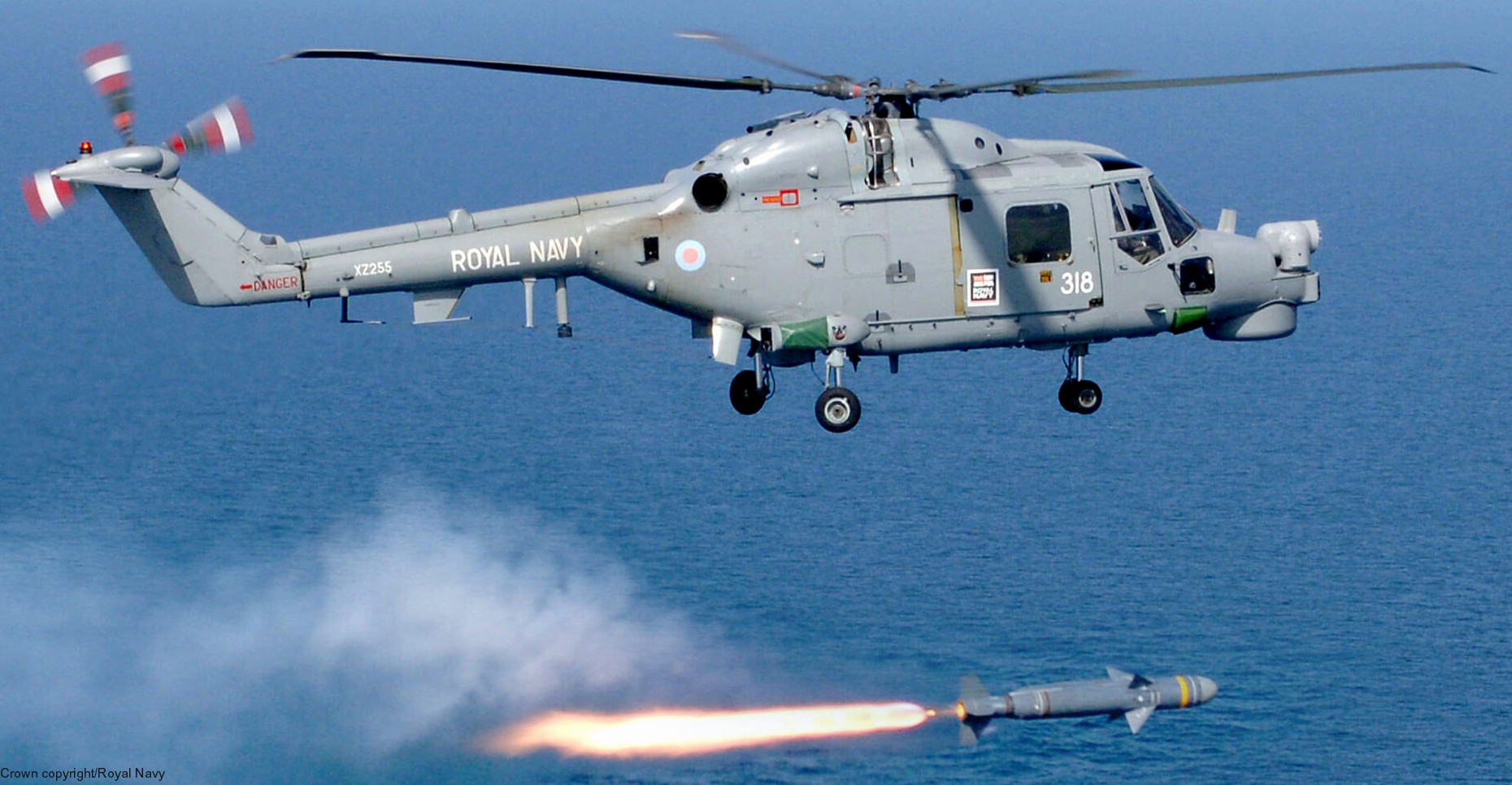 |
|
|
|
The Westland Lynx is a British
multi-purpose twin-engined military helicopter designed and built by
Westland Helicopters at its factory in Yeovil. Originally intended
as a utility craft for both civil and naval usage, military interest
led to the development of both battlefield and naval variants. The
Lynx went into operational usage in 1977 and was later adopted by
the armed forces of over a dozen nations, primarily serving in the
battlefield utility, anti-armour, search and rescue and
anti-submarine warfare roles. The Lynx is a fully aerobatic helicopter with the ability to perform loops and rolls. In 1986, a specially modified Lynx set the current Fédération Aéronautique Internationale's official airspeed record for helicopters (category excludes compound helicopters) at 400.87 km/h (249.09 mph), which remains unbroken as of 2019. Several land and naval variants of the Lynx have been produced along with some major derivatives. The Westland 30 was produced as a civil utility helicopter; it was not a commercial success and only a small number were built during the 1980s. In the 21st century, a modernised variant of the Lynx was designed as a multi-role combat helicopter, designated as the AgustaWestland AW159 Wildcat; the Wildcat is intended to replace existing Lynx helicopters. The Lynx remains in production by AgustaWestland, the successor to Westland Helicopters. Origins: The initial design, then known as the Westland WG.13, was started in the mid-1960s as a replacement for the Westland Scout and Wasp, and a more advanced alternative to the UH-1 Iroquois. The design was to be powered by a pair of Bristol Siddeley BS.360 turboshaft engines. As part of the Anglo-French helicopter agreement signed in February 1967, French company Sud Aviation (later Aérospatiale) had a 30 per cent share of production work, Westland performing the remainder. It was intended that France would procure the Lynx for its Navy and a heavily modified armed reconnaissance variant for the French Army, with the United Kingdom in return buying Aérospatiale Gazelle and Puma for its armed forces. In October 1969, the French Army cancelled its requirement for the Lynx, so development of the armed variant was terminated at an early stage. The first Lynx prototype took its maiden flight on 21 March 1971. In 1972, a Lynx broke the world speed record over 15 and 25 km by flying at 321.74 km/h (199.9 mph) and set a new 100 km closed circuit record shortly afterwards, flying at 318.504 km/h (197.9 mph); both of these records were set by L. Roy Moxam OBE, Westland's Deputy Chief Test Pilot (later Chief Test Pilot). In 1986, the former company demonstrator Lynx, registered G-LYNX, was specially modified with Gem 60 engines and British Experimental Rotor Programme (BERP) rotor blades. On 11 August 1986 the helicopter was piloted by Trevor Egginton when it set an absolute speed record for helicopters over a 15 and 25 km course by reaching 400.87 kilometres per hour (216.45 kn; 249.09 mph); an official record with the FAI it still holds. At this speed, its lift-to-drag ratio was 2, and its BERP blade tips reached a speed of Mach 0.97. The initial naval variant of the Lynx, known as the Lynx HAS.2 in British service, or Lynx Mk.2(FN) in French service, differed from the Lynx AH.1 in being equipped with a tricycle undercarriage and a deck restraint system, folding main rotor blades, an emergency flotation system and a nose-mounted radar. An improved Lynx for the Royal Navy, the Lynx HAS.3, had Gem 42-1 Mark 204 engines, an uprated transmission, a new flotation system and an Orange Crop ESM system. The Lynx HAS.3 also received various other updates in service. A similar upgrade to the French Lynx was known as the Lynx Mk.4(FN). Operational history: The Lynx HAS.2 ASW variant participated in combat operations during the Falklands War in 1982. A combination of Lynx and Westland Sea King helicopters were used to maintain continuous anti-submarine patrols in order to protect the British task force offshore from the Falkland Islands. On 3 May, a Lynx conducted the first combat-firing of a Sea Skua missile, firing on the Argentinian patrol boat ARA Alférez Sobral, inflicting considerable damage to the vessel. This was the first use of sea-skimming missiles in the conflict. Although none were shot down in combat, a total of three were lost aboard vessels that were struck by attacks from Argentine aircraft, these vessels being HMS Coventry, HMS Ardent and SS Atlantic Conveyor. On 14 May 1989, in the type's second fatal accident, Lynx HAS3GM XZ244, attached to HMS Brilliant, crashed near Mombasa, Kenya, while en route to the city's airport for a period of shore leave. A door had detached when opened inflight and collided with the tail rotor, resulting in the aircraft splitting in half and the death of all nine personnel on board. As a result, door modifications and inflight opening restrictions were introduced. As of 2004, it remained the deadliest Lynx crash. The Navy's Lynx helicopters were among Britain's contribution to the coalition against Saddam Hussein's Iraq during the 1991 Gulf War. During the Battle of Bubiyan, the biggest naval engagement of the conflict, the Lynx and its Sea Skua missiles proved to be decisive, being responsible for the majority of individual engagements with various Iraqi Navy vessels. By 2 February 1991, 25 Sea Skuas had been launched, out of these, 18 were confirmed as having hit their targets, and had succeeding in heavily damaging a significant portion of Iraq's navy. Navy Lynxes were routinely used to deploy troops to oil platforms and into occupied Kuwait, as well as to perform aerial reconnaissance across the Gulf. The Royal Navy retired its Lynx helicopters from active service on 23 March 2017 with its official decommissioning. On 17 March, a final flypast was conducted by four Royal Navy Westland Lynx HMA8 helicopters from 815 Naval Air Squadron, based at RNAS Yeovilton in Somerset. Naval variants: Lynx HAS.2 Initial production version for the Royal Navy (HAS.2) and the French Navy (Mk.2(FN)), powered by Gem 2 engines and with wheeled undercarriage, folding rotors and tail and deck lock. HAS.2 equipped with British Sea Spray radar, with Mk.2(FN) having French radar and dipping sonar. When it used in the anti-submarine role, it can carry two torpedoes or depth charges. For anti-surface warfare, it is equipped with either four Sea Skua missiles (Royal Navy) or four AS.12 missiles (French Navy). 60 built for Royal Navy, and 26 for France. Lynx HAS.2.5 An interim HAS 3 equipped with the improved Gem 42 series engines but the original HAS 2 gearbox. Only used by 702 NAS in 1985/86 before all were converted to full HAS 3 standard. Lynx HAS.3 Improved version of HAS.2 powered by Gem 42-1 engines and with upgraded gearbox. Thirty built from new, with deliveries starting in March 1982 and all remaining HAS.2s (53 aircraft) converted to HAS.3 standards. Lynx HAS.3GM Modified HAS.3 helicopters for the Royal Navy, for service in the Persian Gulf, with improved electronic warfare equipment, revised IFF and provision for Forward looking infrared (FLIR) under fuselage. Originally deployed for the 1990-91 Gulf War. Designated HAS.3S/GM when fitted with secure radios. (GM denotes Gulf Modification). Lynx HAS.3S Improved version of the HAS.3 for the Royal Navy fitted with secure radio systems. Lynx HAS.3SGM An improved HAS.3GM with integrated Secure V/UHF communications, Mode 4 IFF, Loral Challenger ALQ 157 Infra Red Countermeasures turrets (fitted on the fuselage side high up just behind the Plot's/Observer's doors), M130 Chaff/Flare dispensers and provision for Sandpiper Forward looking infrared (FLIR) mounted under the port side inboard weapon carrier. First aircraft converted was XZ733, which deployed with the Type 22 frigate HMS Brave in January 1991 for Operation Granby (Gulf War). Lynx HAS.3ICE HAS.3 modified for Antarctic service aboard ice patrol ships HMS Endurance. Designated HAS.3SICE when fitted with secure radios. Lynx HAS.3CTS HAS.3 upgraded with avionics system proposed for HMA.8. Seven converted as test beds. Lynx HMA.8 Upgraded maritime attack version based on Super Lynx 100. Gem 42-200 engines, BERP type main rotors and larger tail rotor of AH.7. Fitted with FLIR in turret above nose, with radar moved to radome below nose. Lynx HMA.8(DSP) DSP from digital signal processor. Lynx HMA.8(DAS) DSP aircraft were modified with "Defensive Aids Subsystem". Lynx HMA.8(SRU) DAS aircraft modified with SATURN ("Second-generation Anti-jam Tactical UHF Radio for NATO") Radio Upgrade. Incorporates SIFF ("Successor to IFF"). Lynx HMA.8(CMP) Combined Mods Programme. SRU aircraft modified with improved communications and defensive systems. With all HMA.8 aircraft upgraded to CMP standard, HMA.8(CMP) aircraft were re-designated back to HMA.8(SRU). The Lynx HAS.8 fleet is currently undergoing further modifications, by the Lynx Operational Support Team, to improve self-defence, mission execution and survivability. These modifications will not affect the SRU designation. Specifications: Length: 43 ft 9.25 in (13.3414 m) including tail-rotor Length overall: 50 ft (15.24 m) Length folded: 35 ft 7.25 in (10.85 m) Width folded: 9 ft 7.75 in (2.94 m) Height folded: 10 ft 8 in (3.25 m) Height: 12 ft 0.5 in (3.670 m) including tail-rotor Main rotor diameter: 42 ft 0 in (12.80 m) Main rotor area: 1,385.4 sq ft (128.71 m2) Maximum speed: 175 kn (201 mph, 324 km/h) Empty weight: 7,225 lb (3,277 kg) Max takeoff weight: 11,750 lb (5,330 kg) Operating weight: ASW mission: 10,181 lb (4,618 kg) (2x torpedo) ASV mission: 9,641 lb (4,373 kg) (2x Sea Skua) Surveillance and targeting mission: 8,174 lb (3,708 kg) SAR mission: 8,329 lb (3,778 kg) Endurance: 5 hours 20 minutes with auxiliary fuel Range: 285 nmi (328 mi, 528 km) Combat range: 540 nmi (620 mi, 1,000 km) with auxiliary fuel ASW: 20 nmi (23 mi; 37 km) with dipping sonar + one torpedo and 2 hours on station Point attack: 125 nmi (144 mi; 232 km) with 4 x Sea Skua Surveillance: 75 nmi (86 mi; 139 km) - 3 hours 50 minutes on station Powerplant: 2 x LHTEC CTS800-4N turboshaft engines, 1,362 shp (1,016 kW) each for take-off, 1,267 shp (945 kW) maximum continuous or 2 x Rolls-Royce Gem 42-1 - 1,000 / 890 shp (746 / 664 kW) Armament: 2 x torpedoes or 4 x Sea Skua missiles or 2 x depth charges 1 x Caliber 0.50 Browning AN/M3M heavy machine gun (door) AgustaWestland Wildcat HMA2 will replace Royal Navy Lynx helicopters. source: wikipedia + |
|
images various HAS.2/3 + HMA.8 variants |
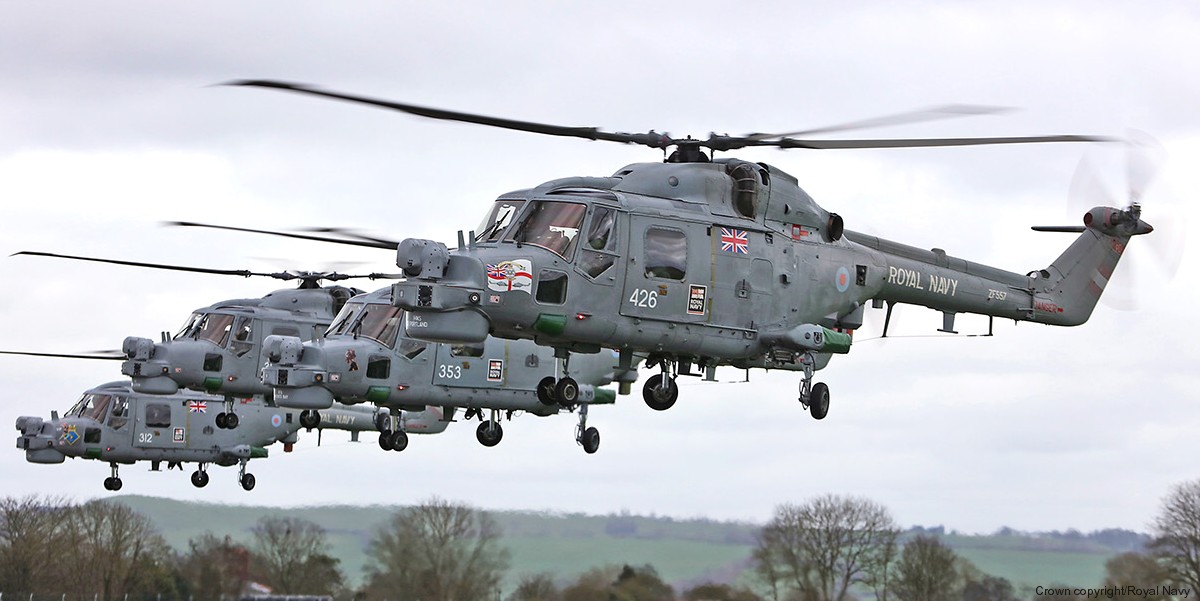 Lynx HMA.8  a Sea Skua missile was fired from a Lynx HMA.8 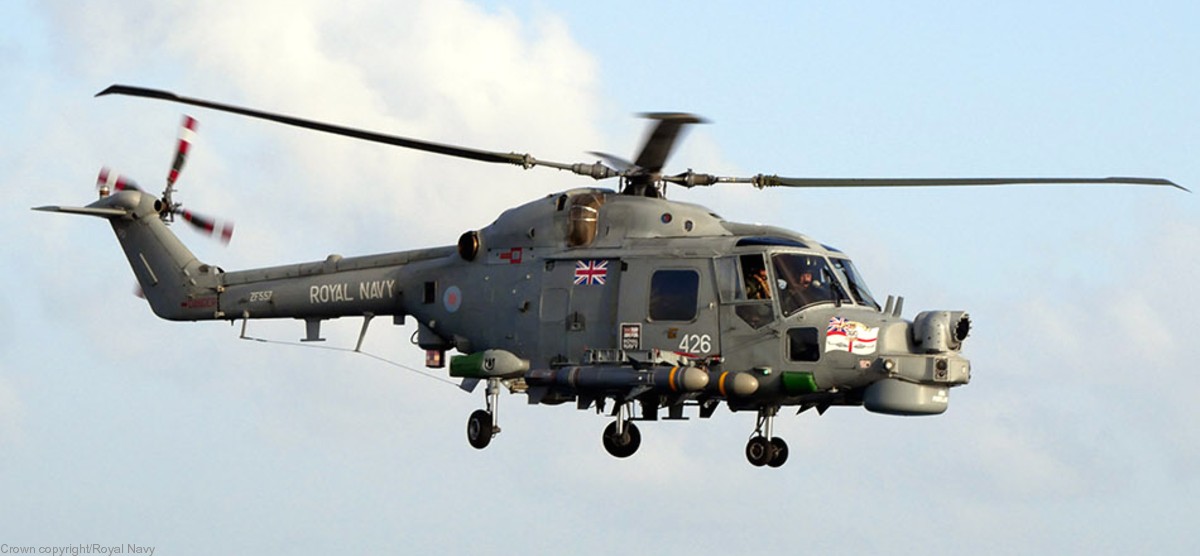 Lynx HMA.8 carrying Sea Skua anti-ship missiles 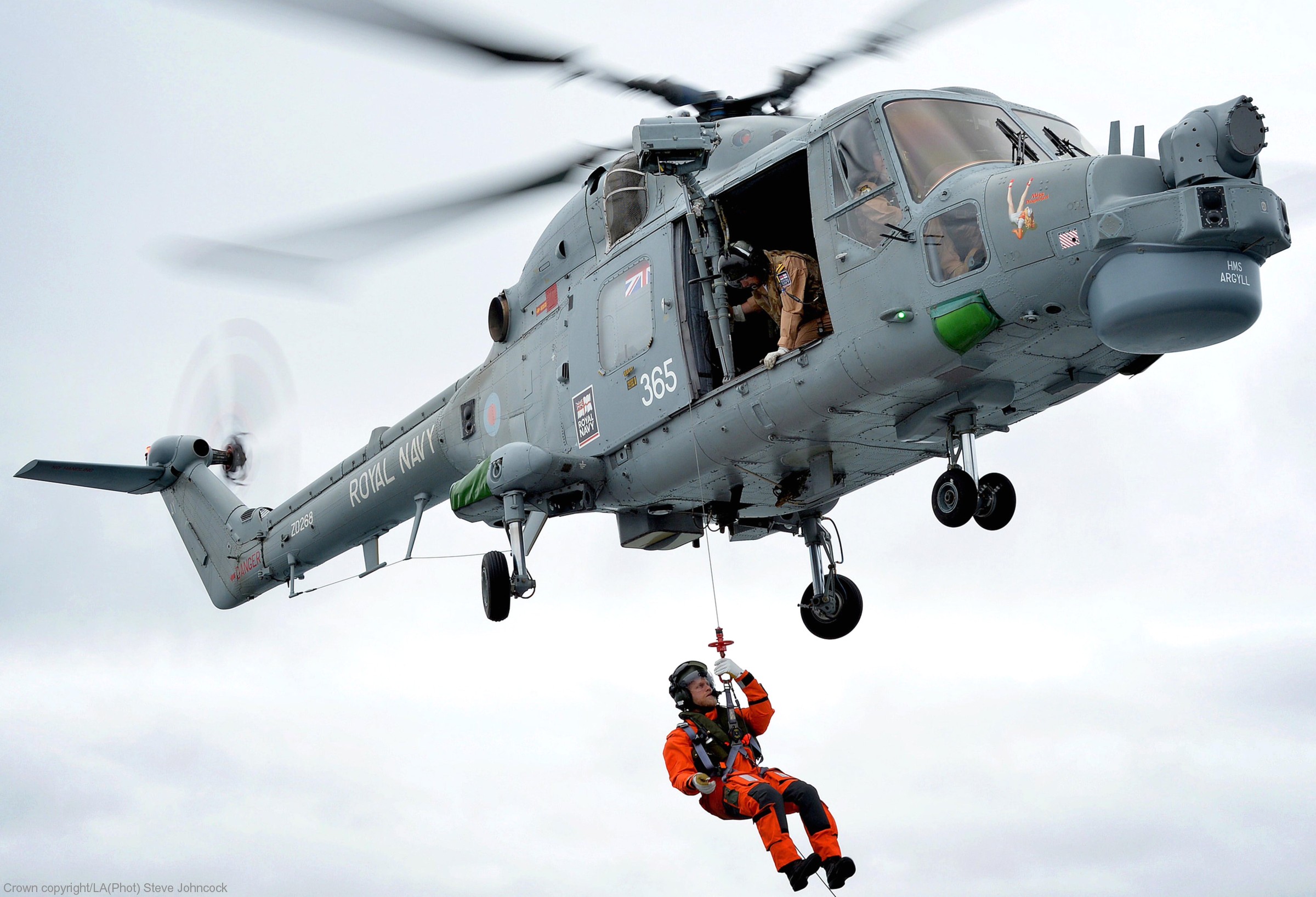 Lynx HMA.8 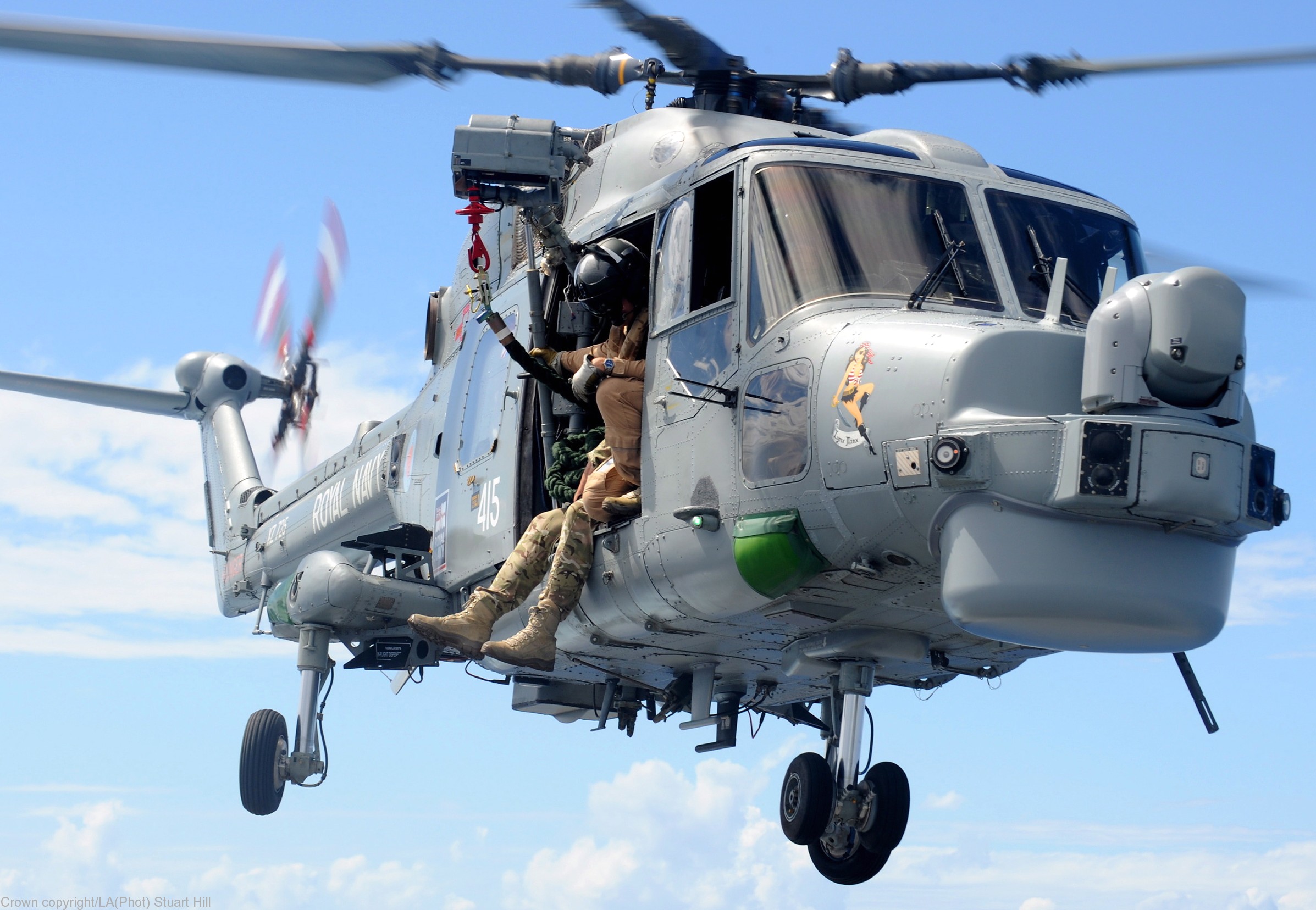 Lynx HMA.8 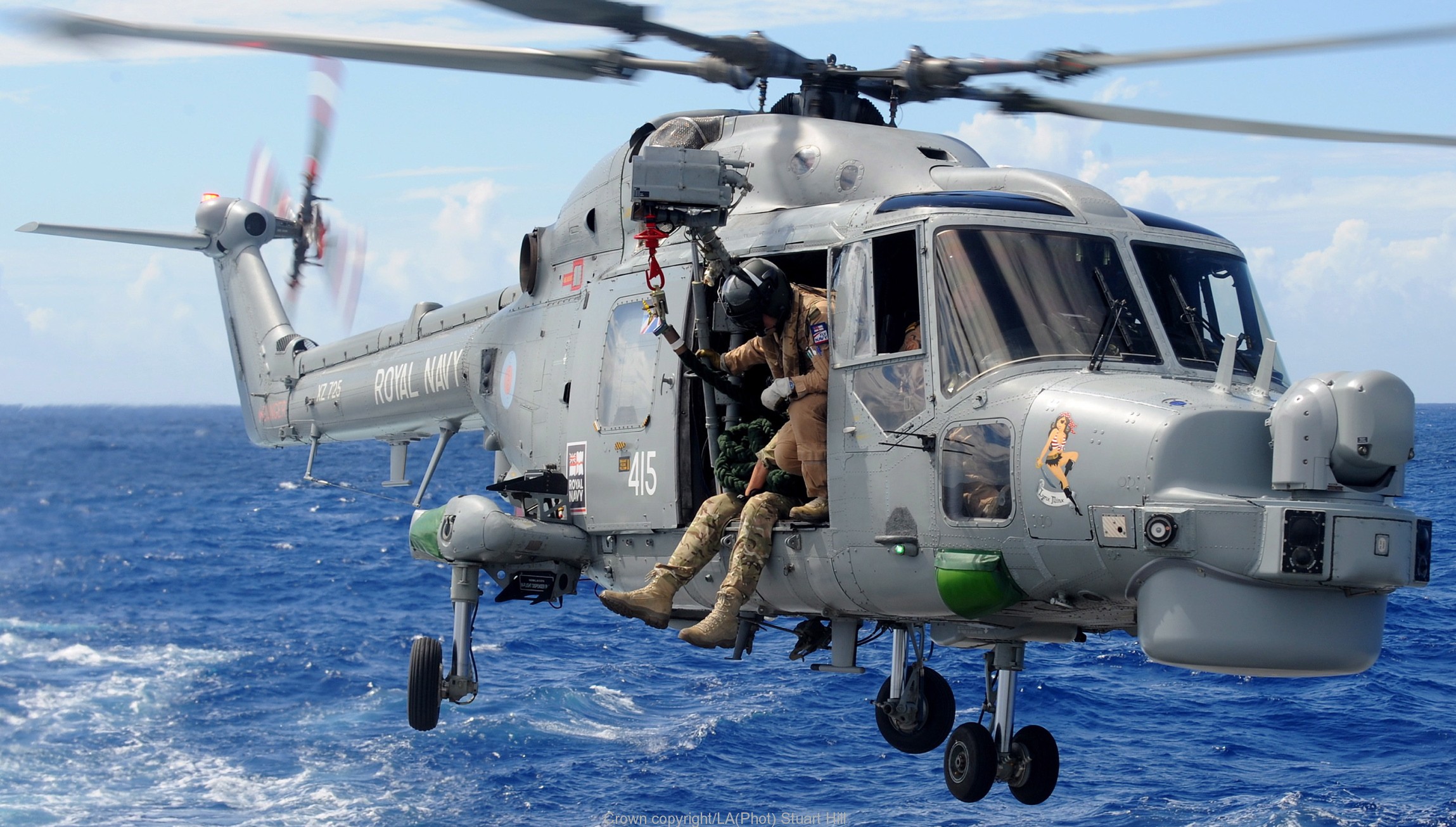 Lynx HMA.8 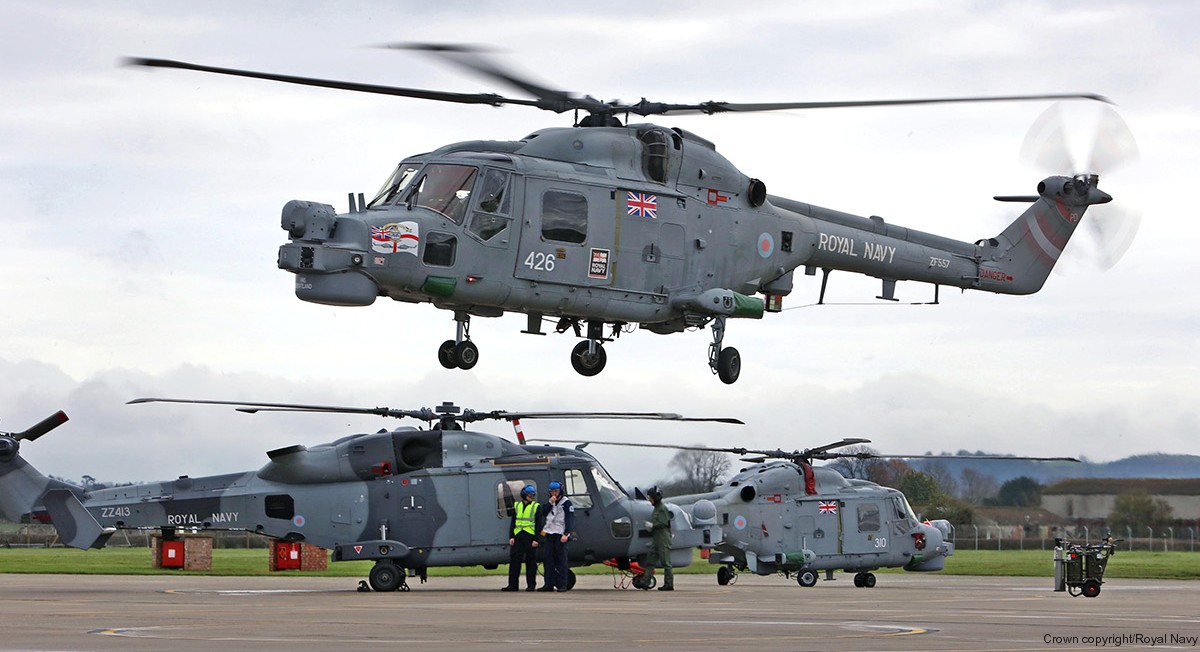 Lynx HMA.8 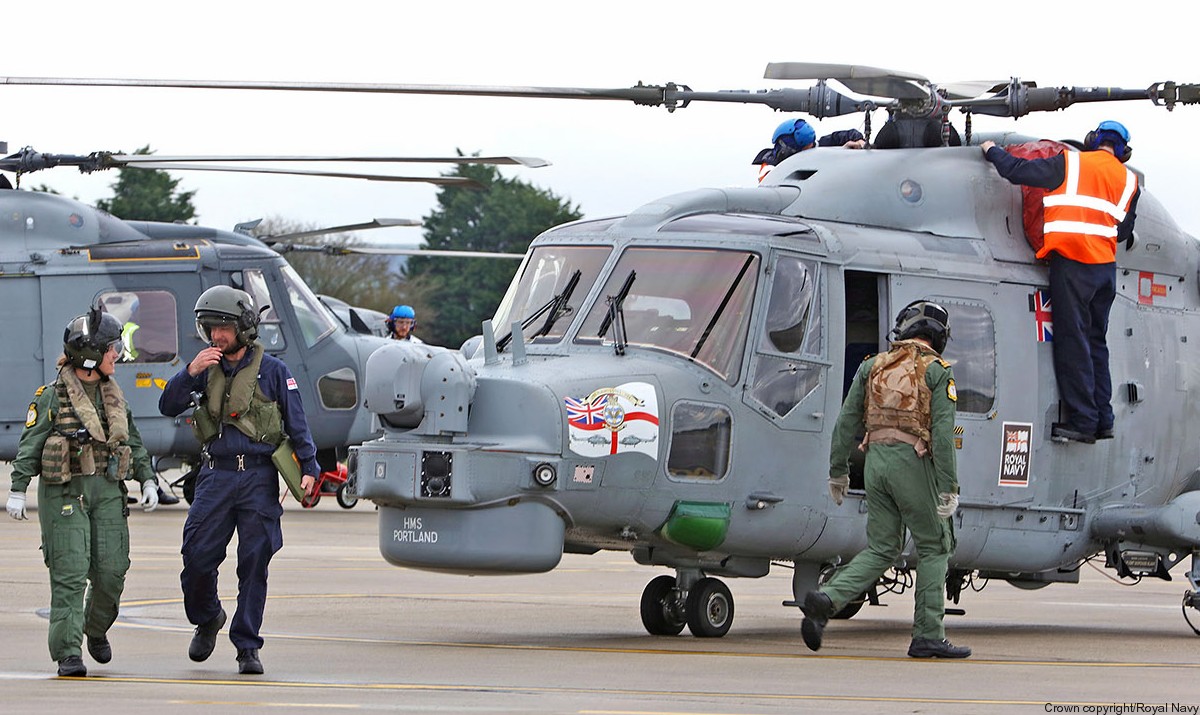 Lynx HMA.8 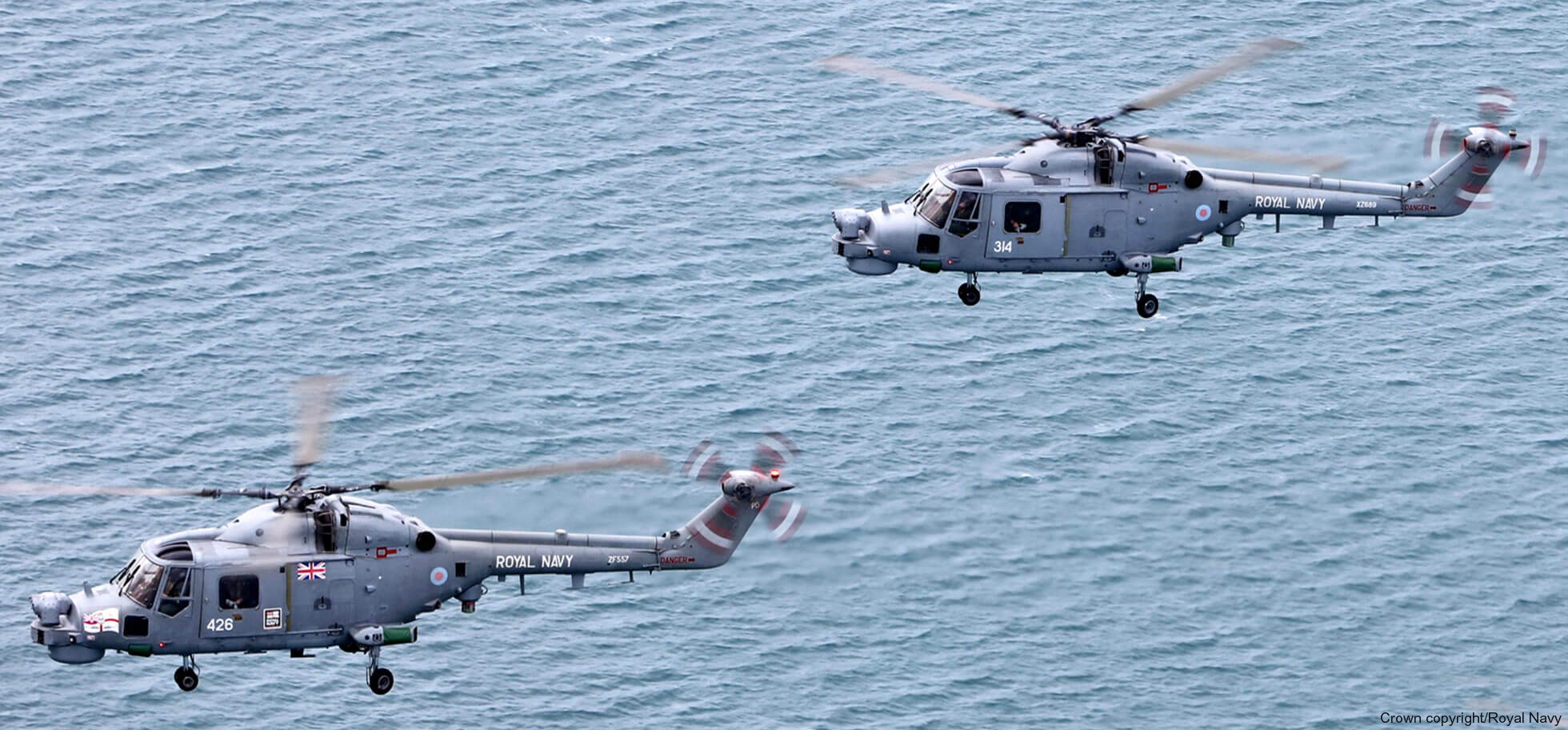 Lynx HMA.8 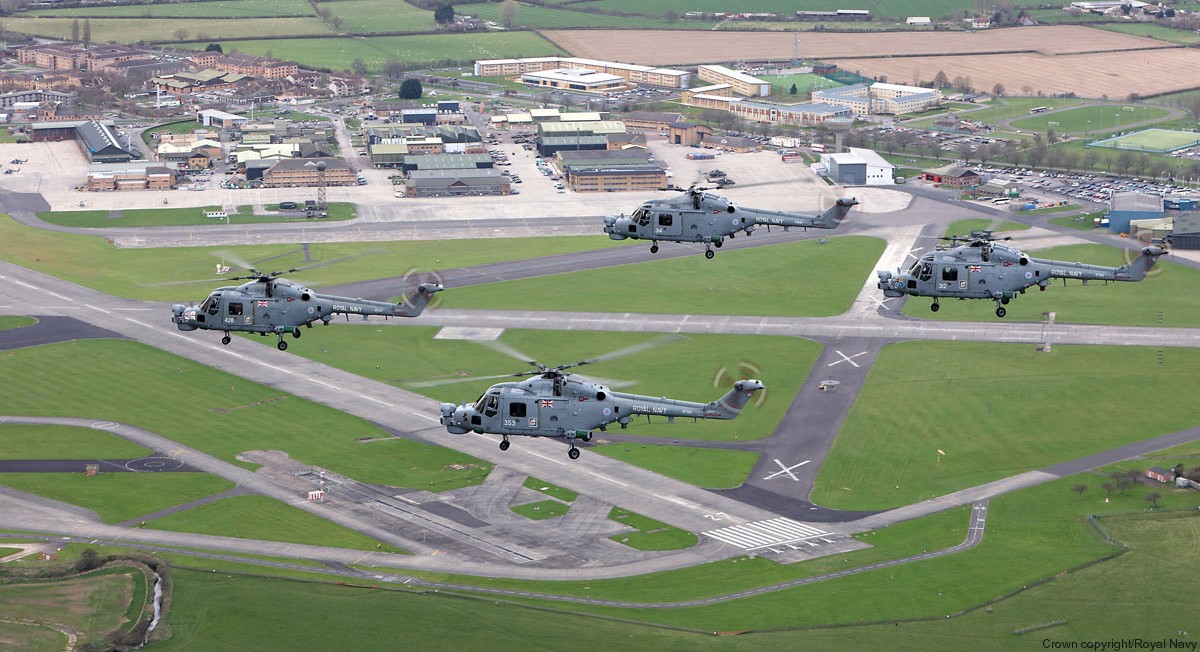 Lynx HMA.8's final flight over RNAS Yeovilton (HMS Heron) 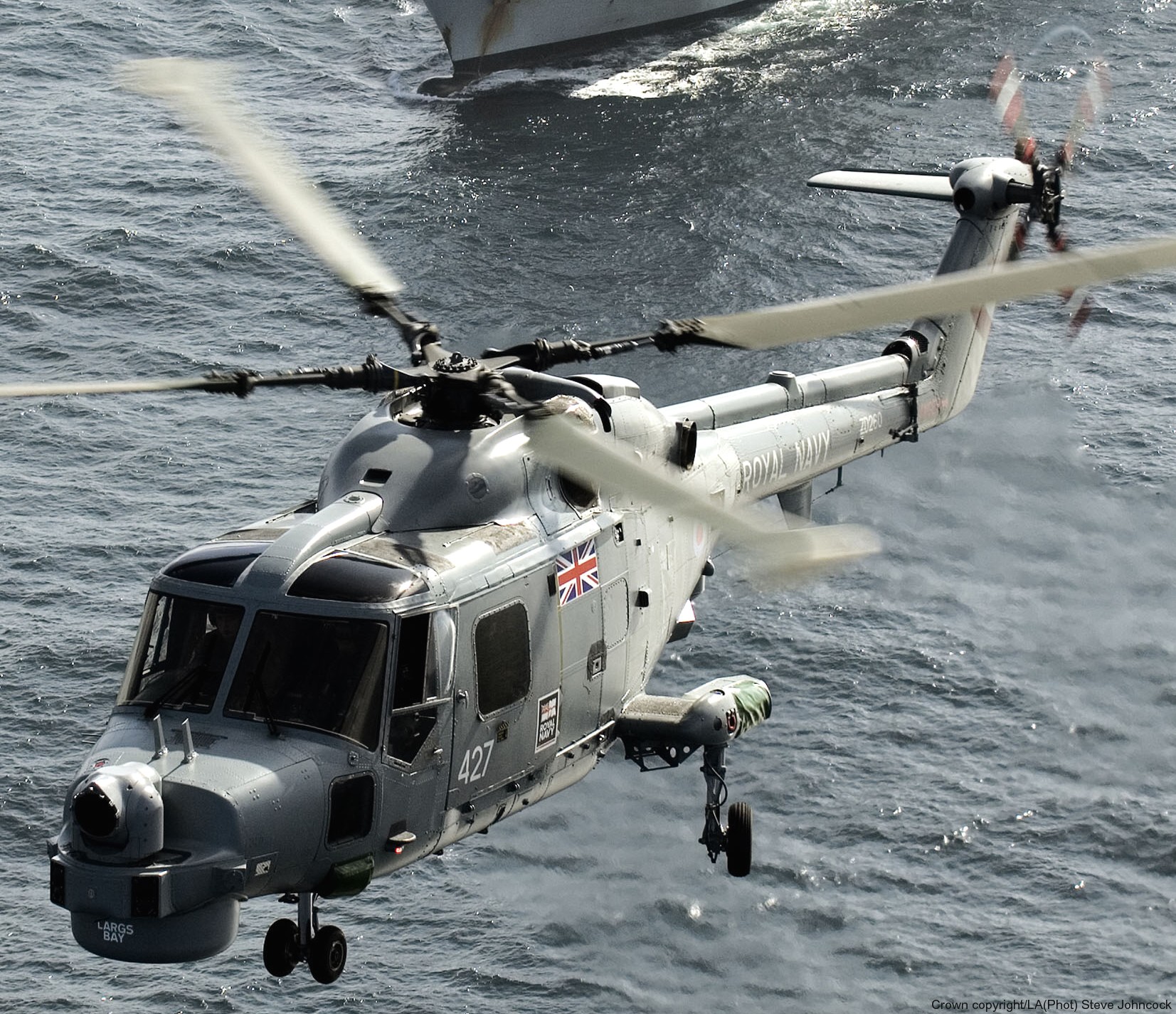 Lynx HMA.8 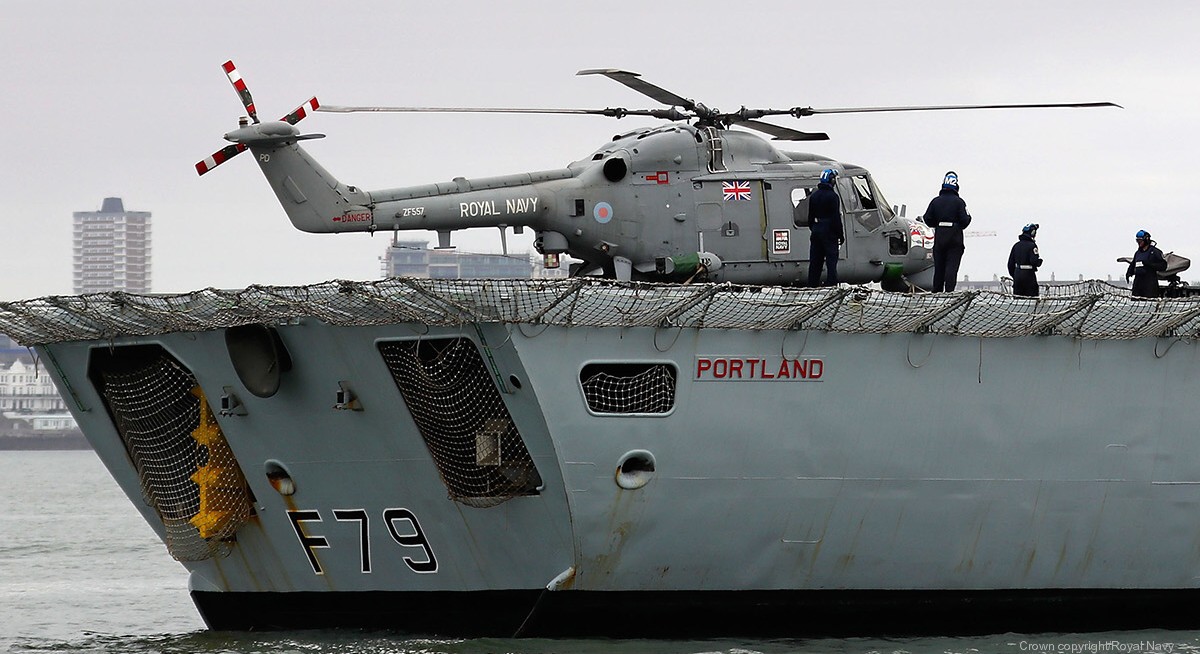 Lynx HMA.8 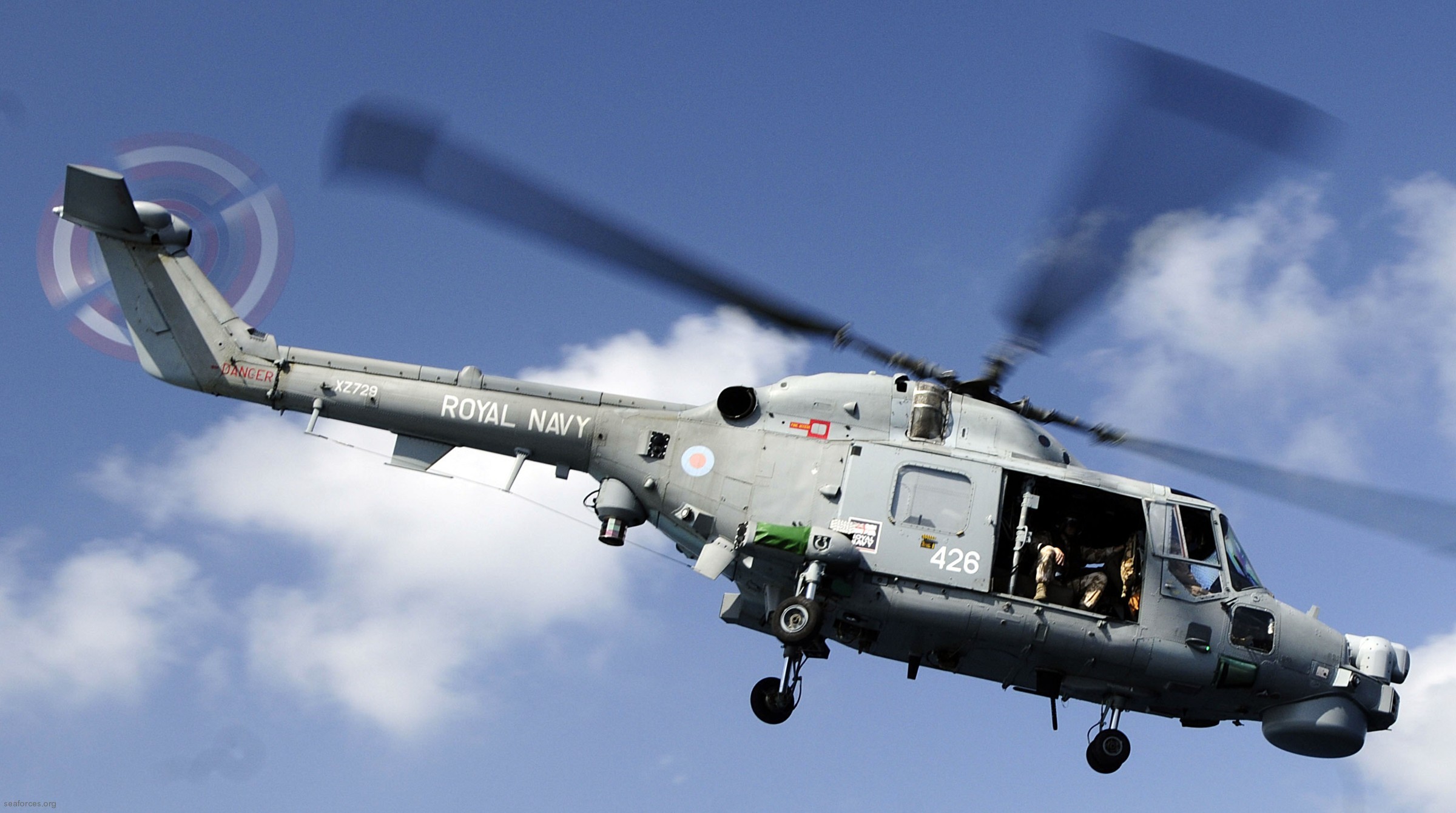 Lynx HMA.8 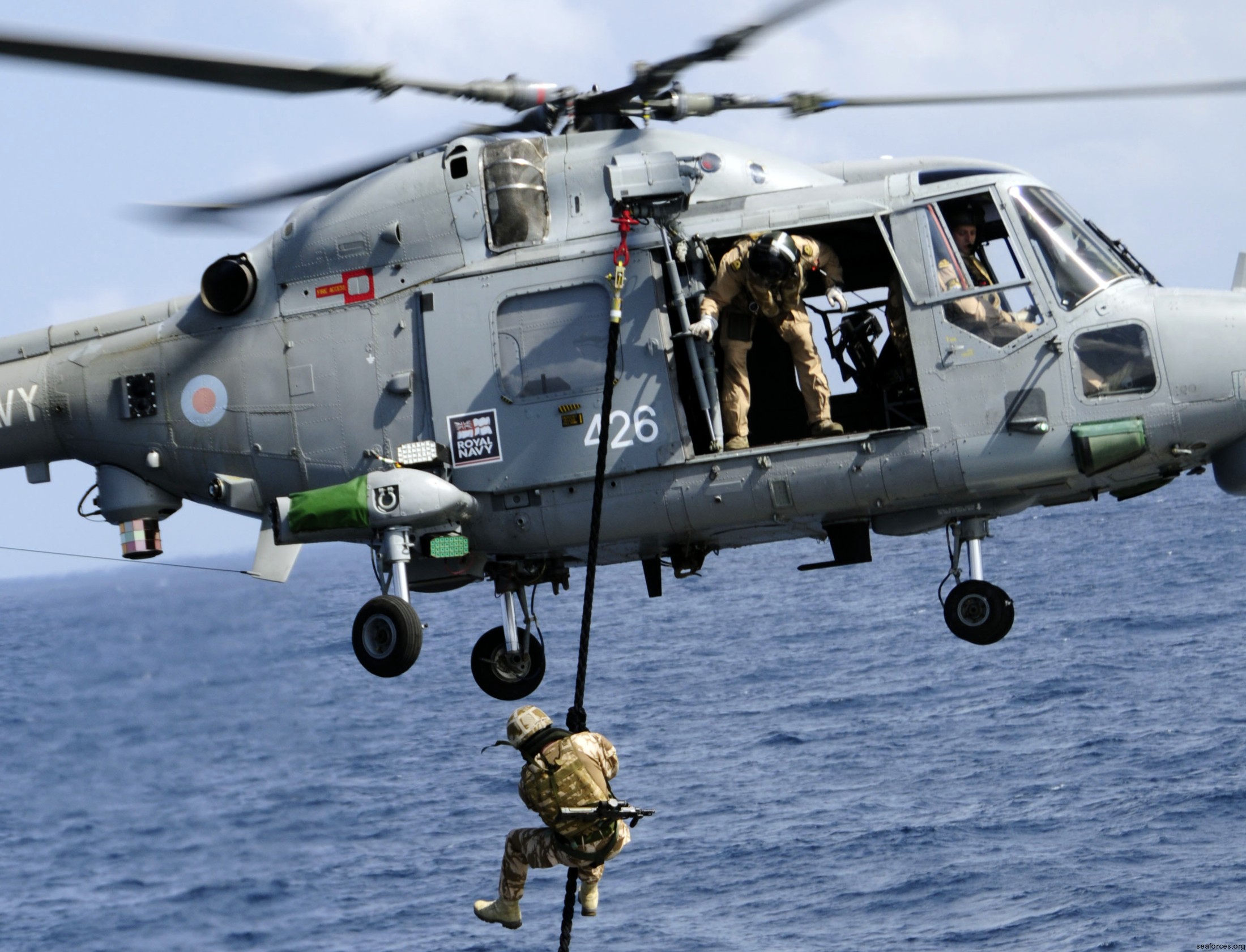 Lynx HMA.8 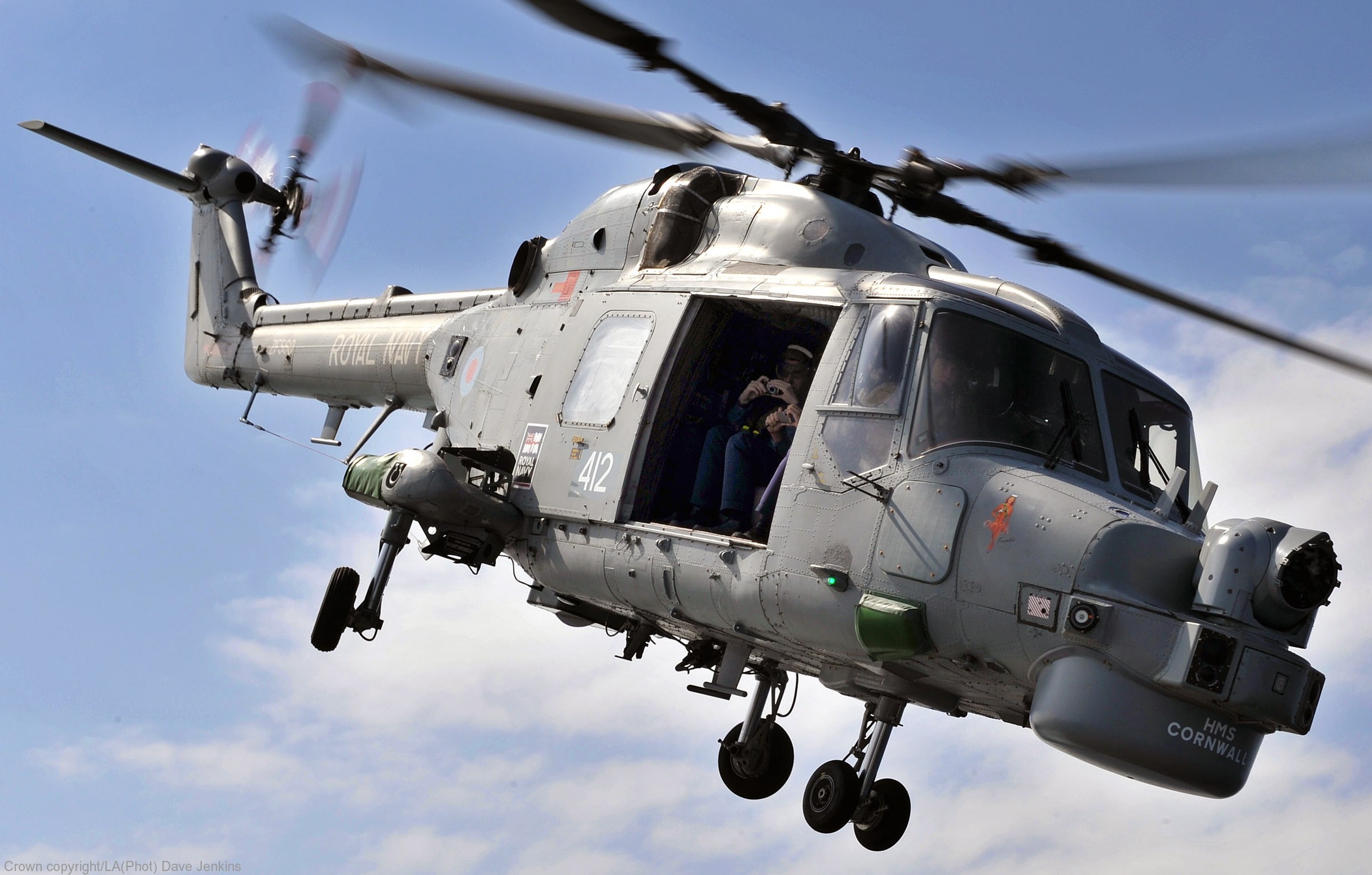 Lynx HMA.8 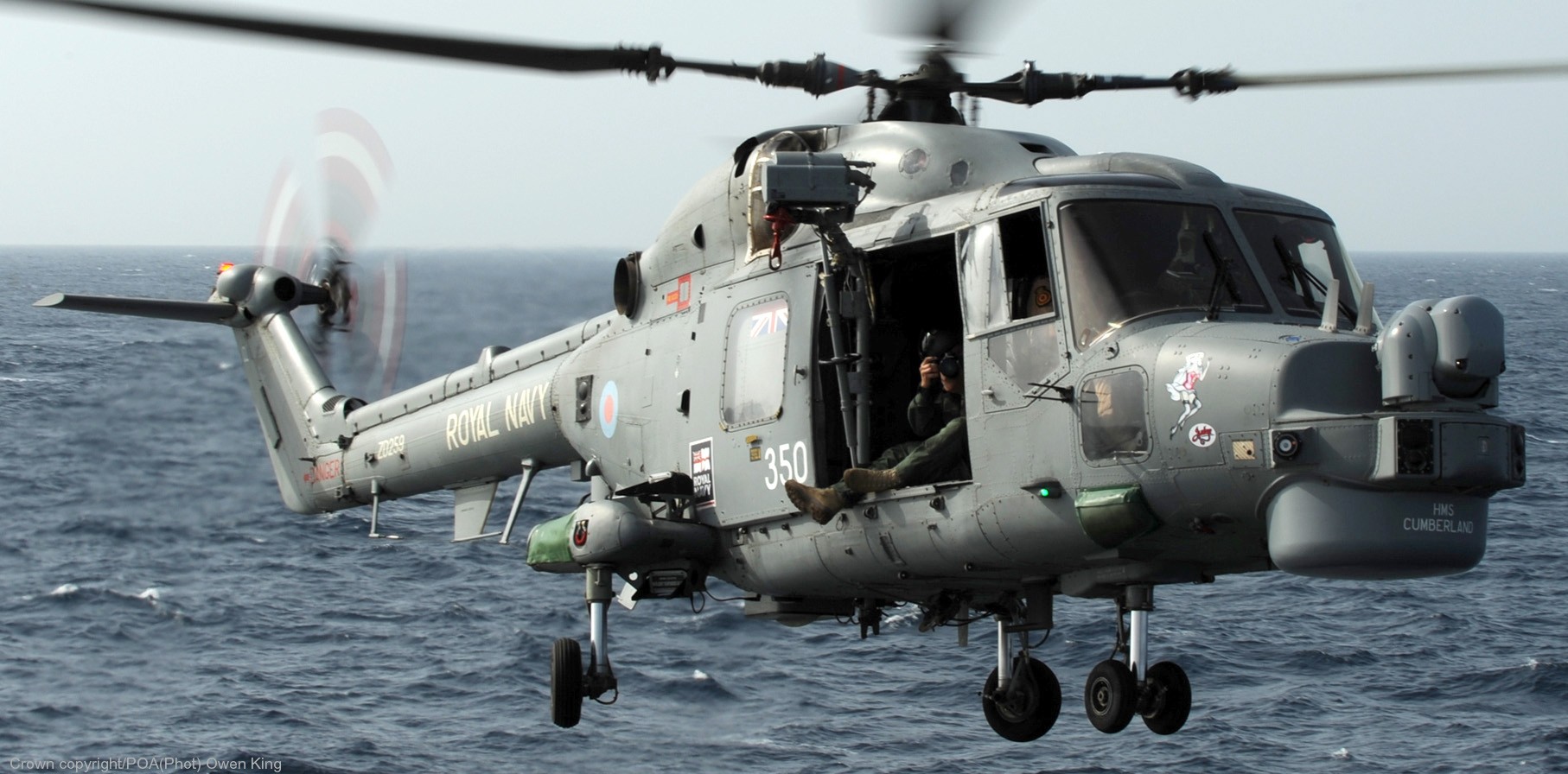 Lynx HMA.8 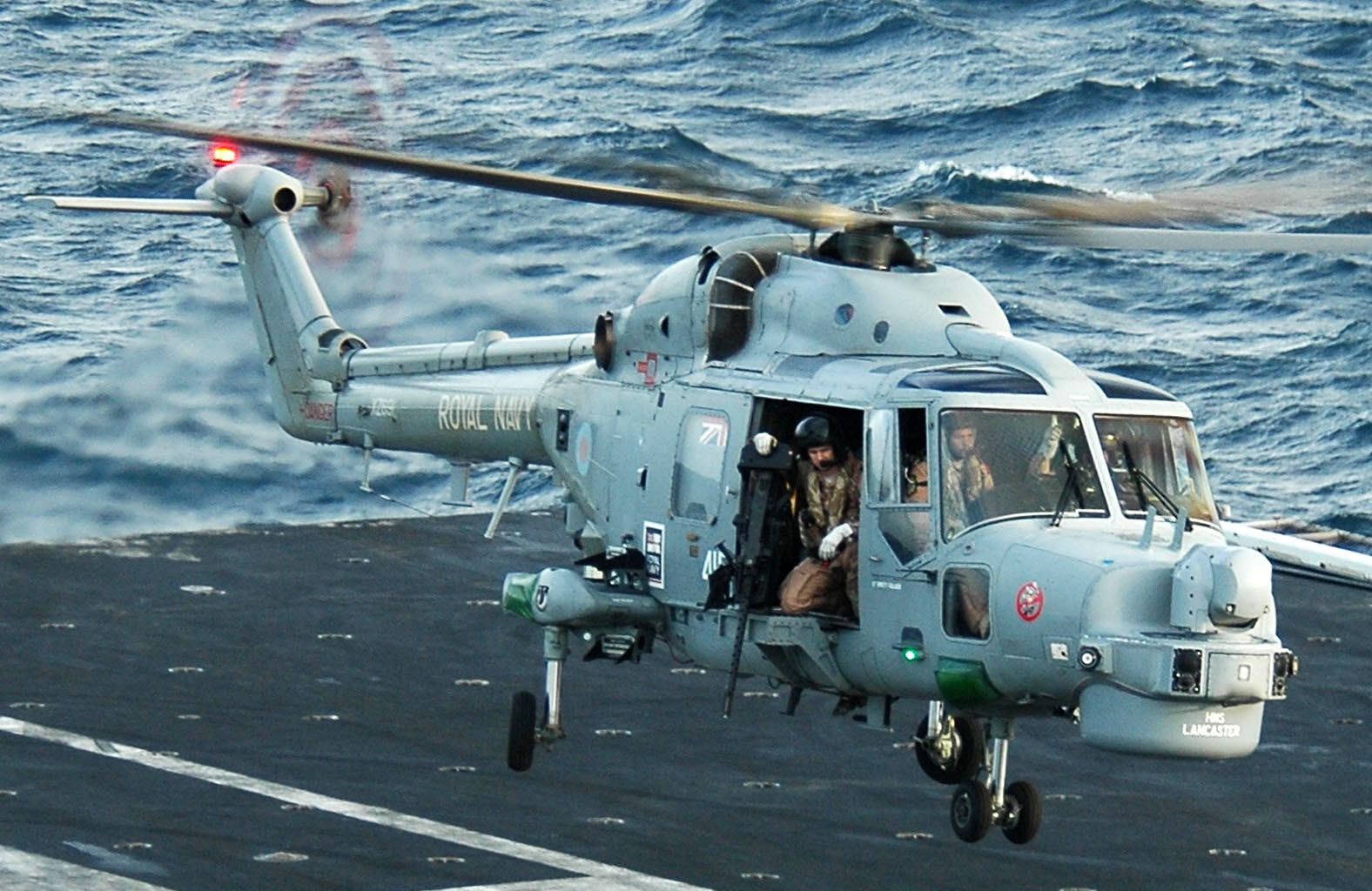 Lynx HMA.8 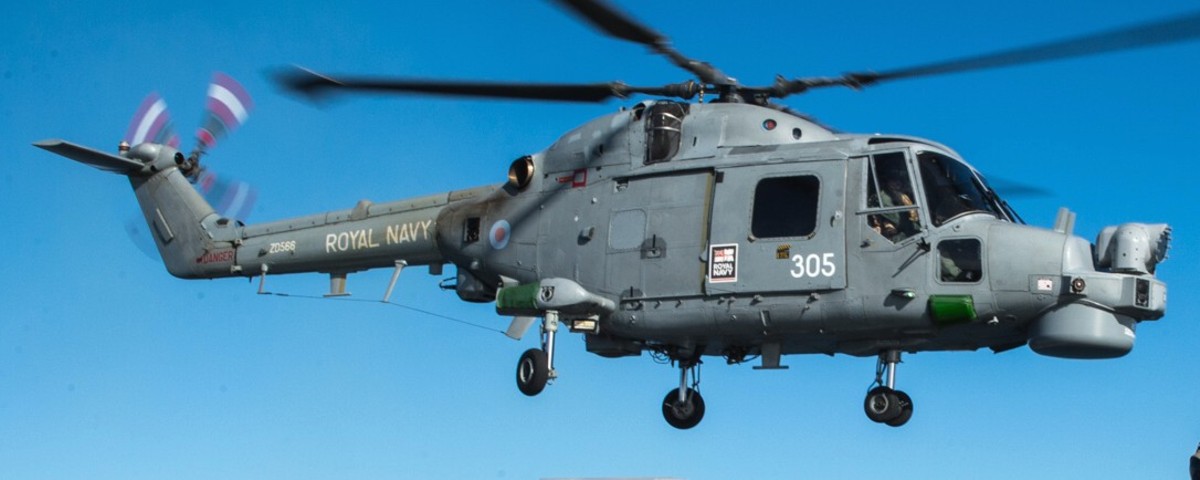 Lynx HMA.8 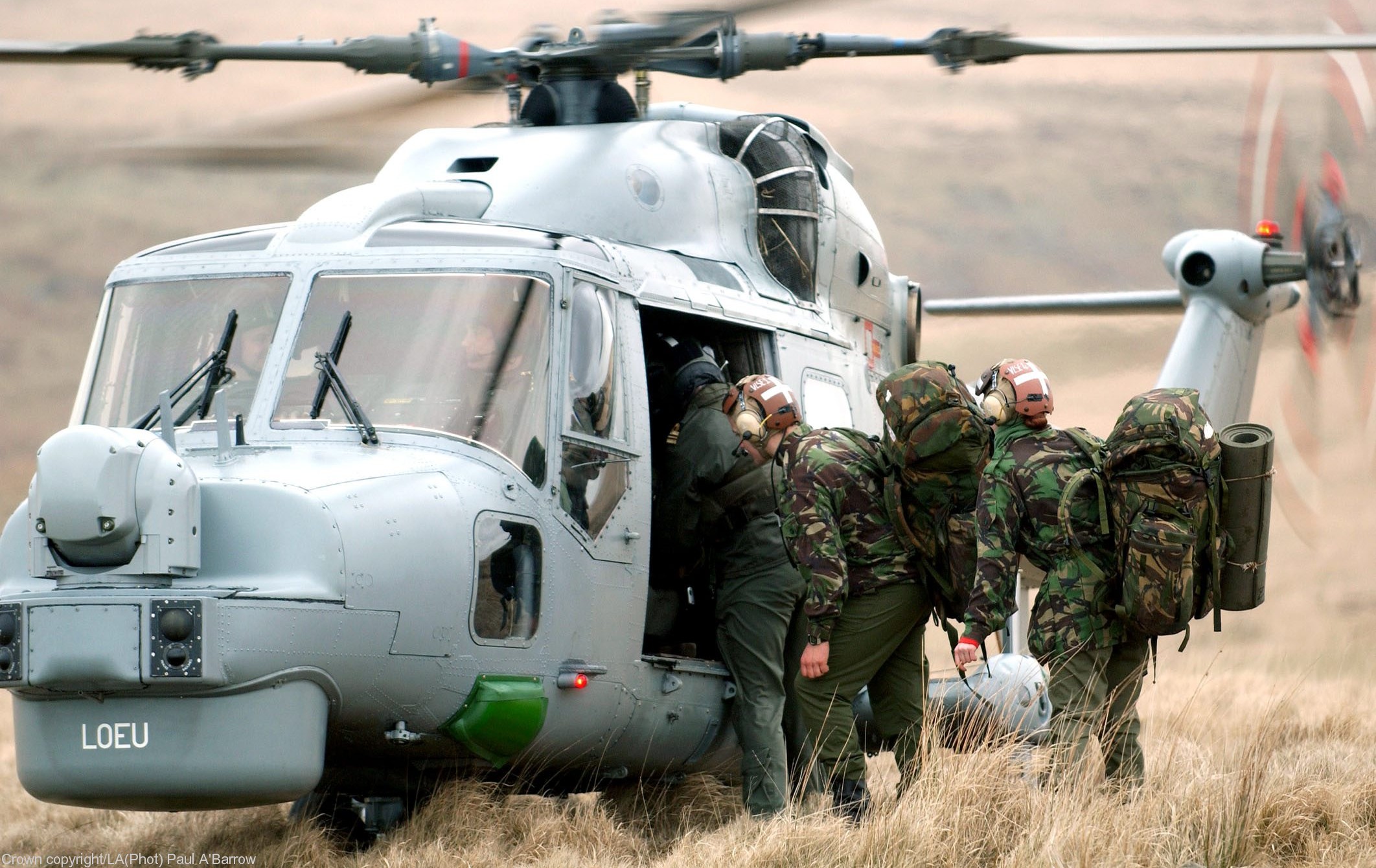 Lynx HMA.8 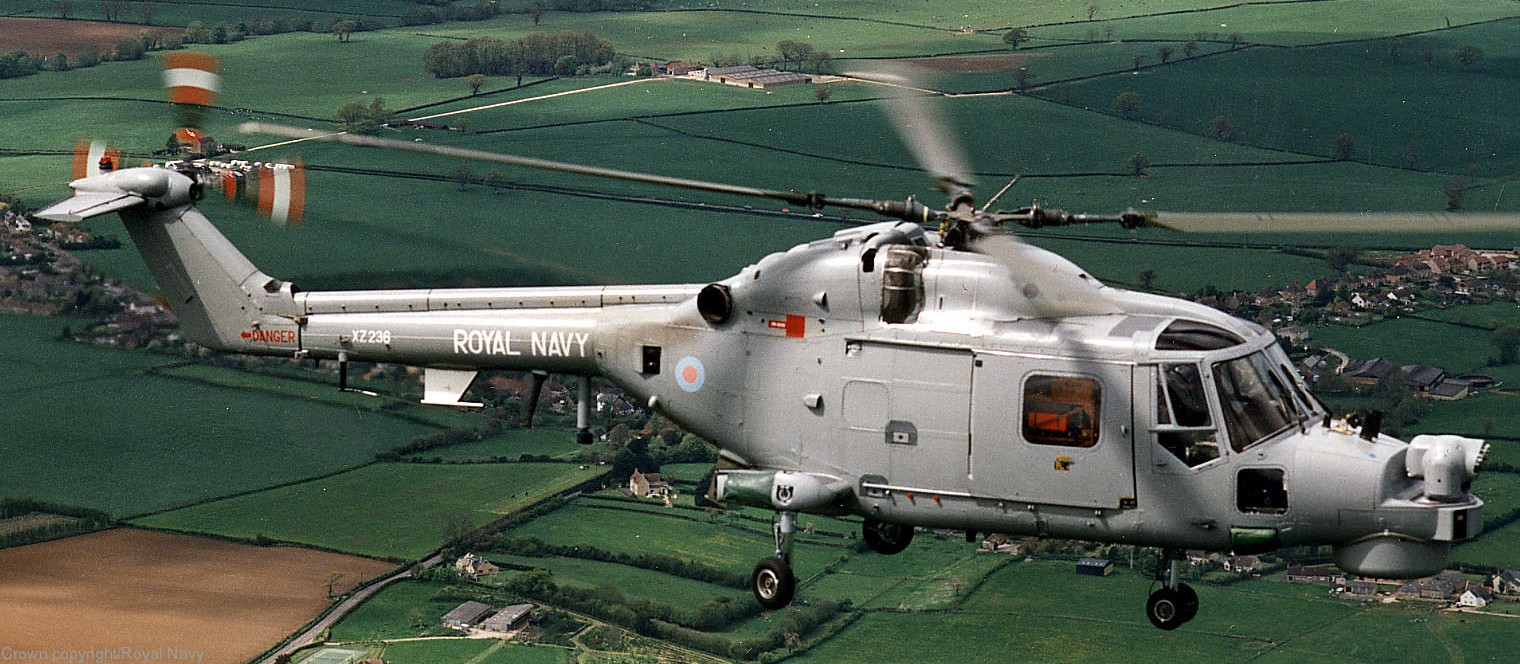 Lynx HMA.8 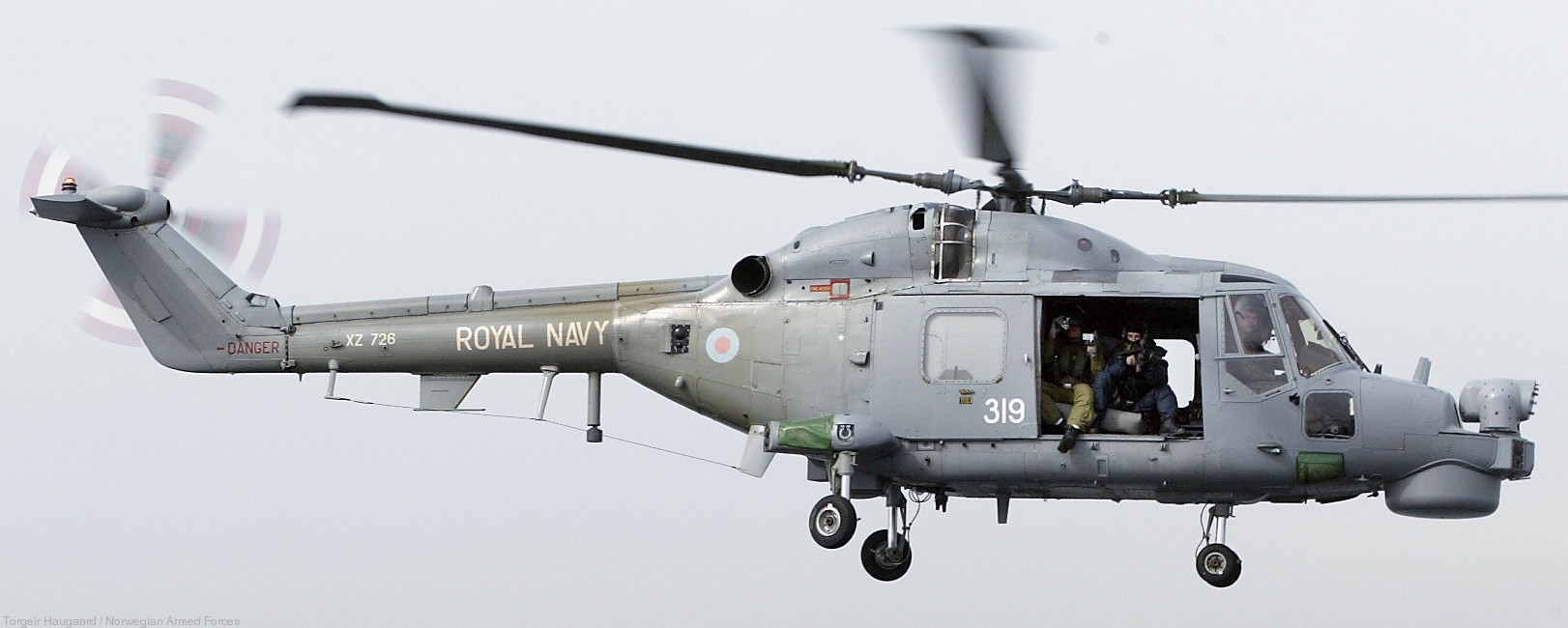 Lynx HMA.8 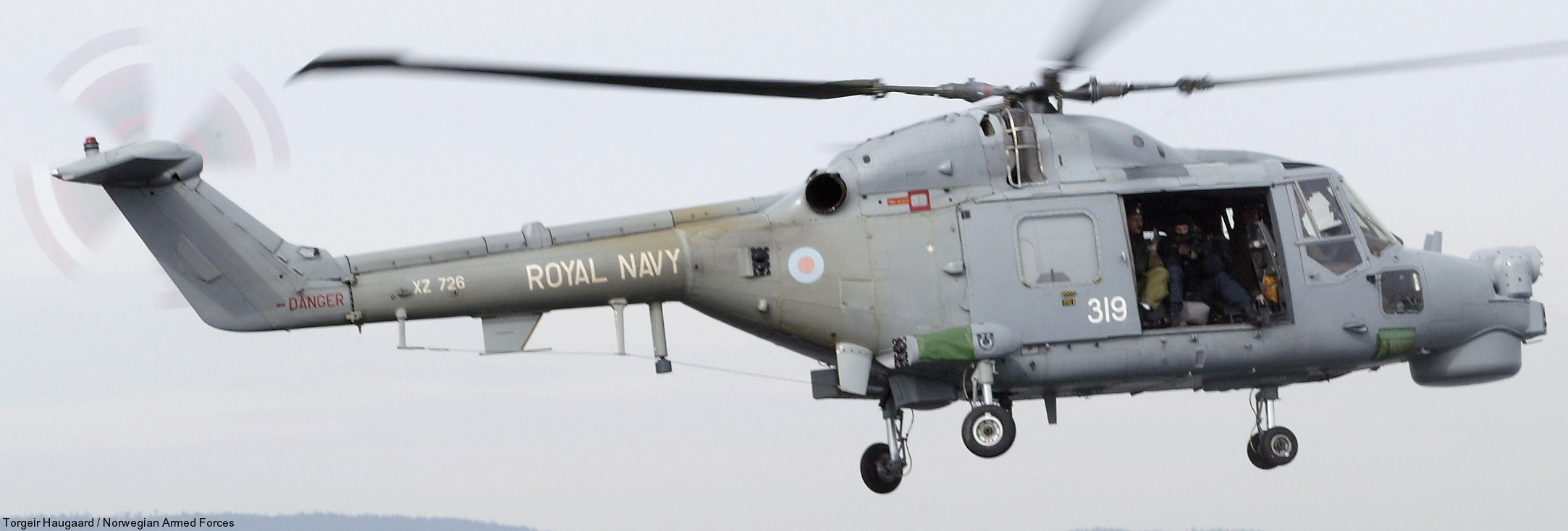 Lynx HMA.8 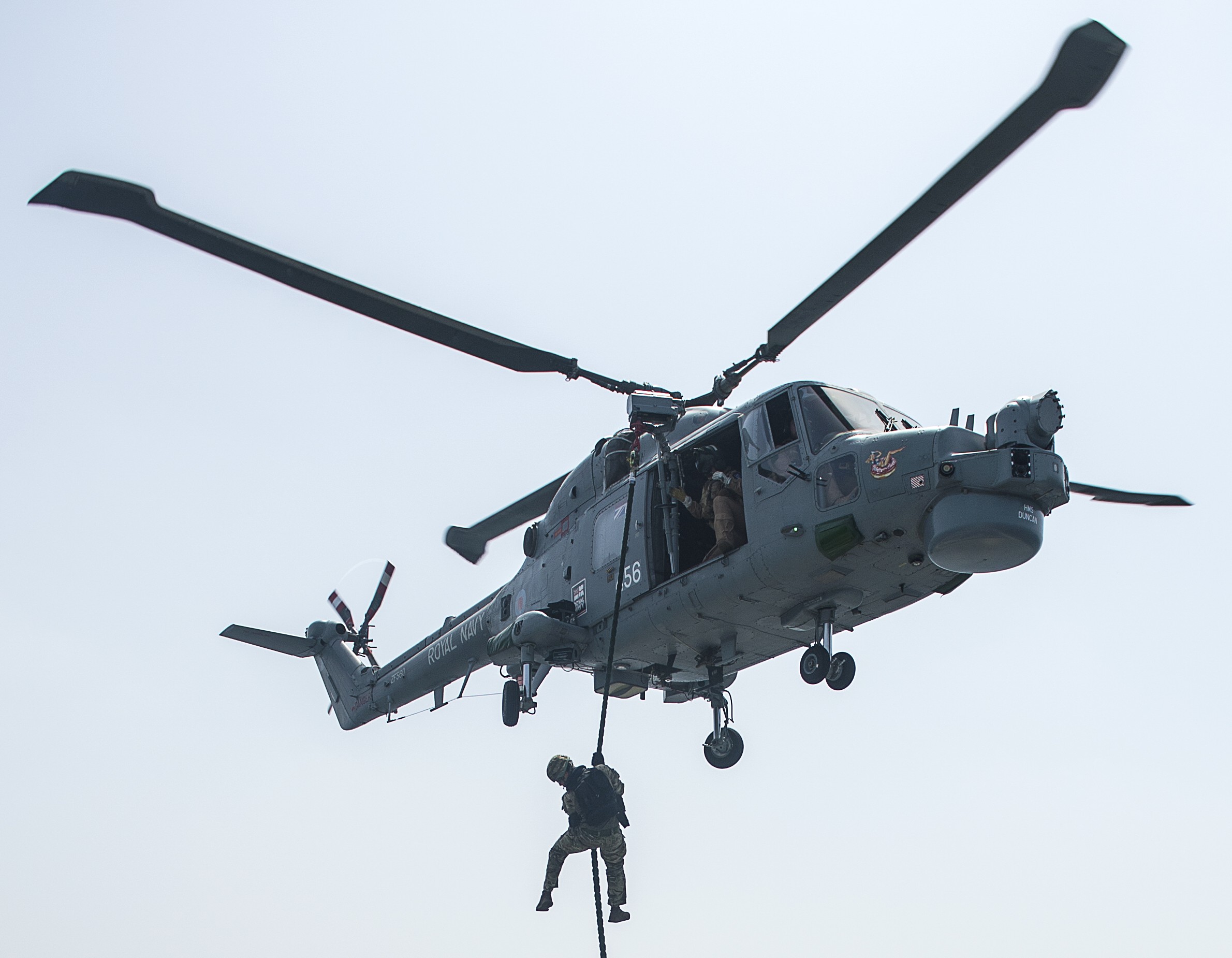 Lynx HMA.8 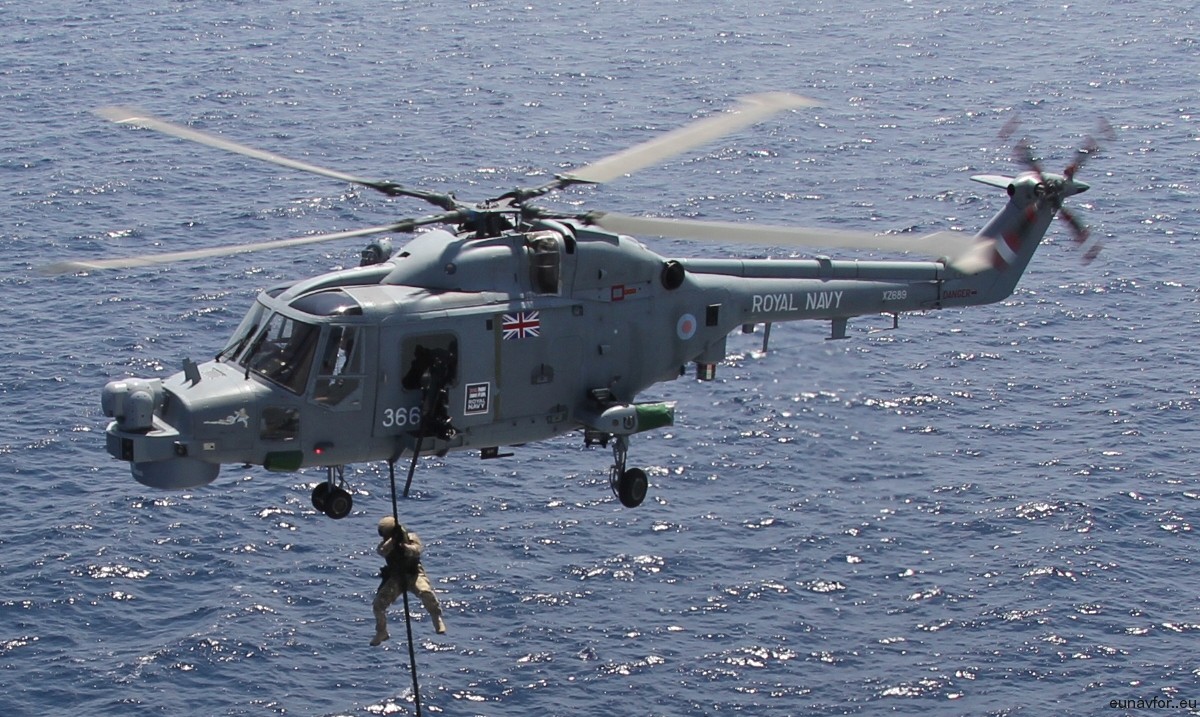 Lynx HMA.8 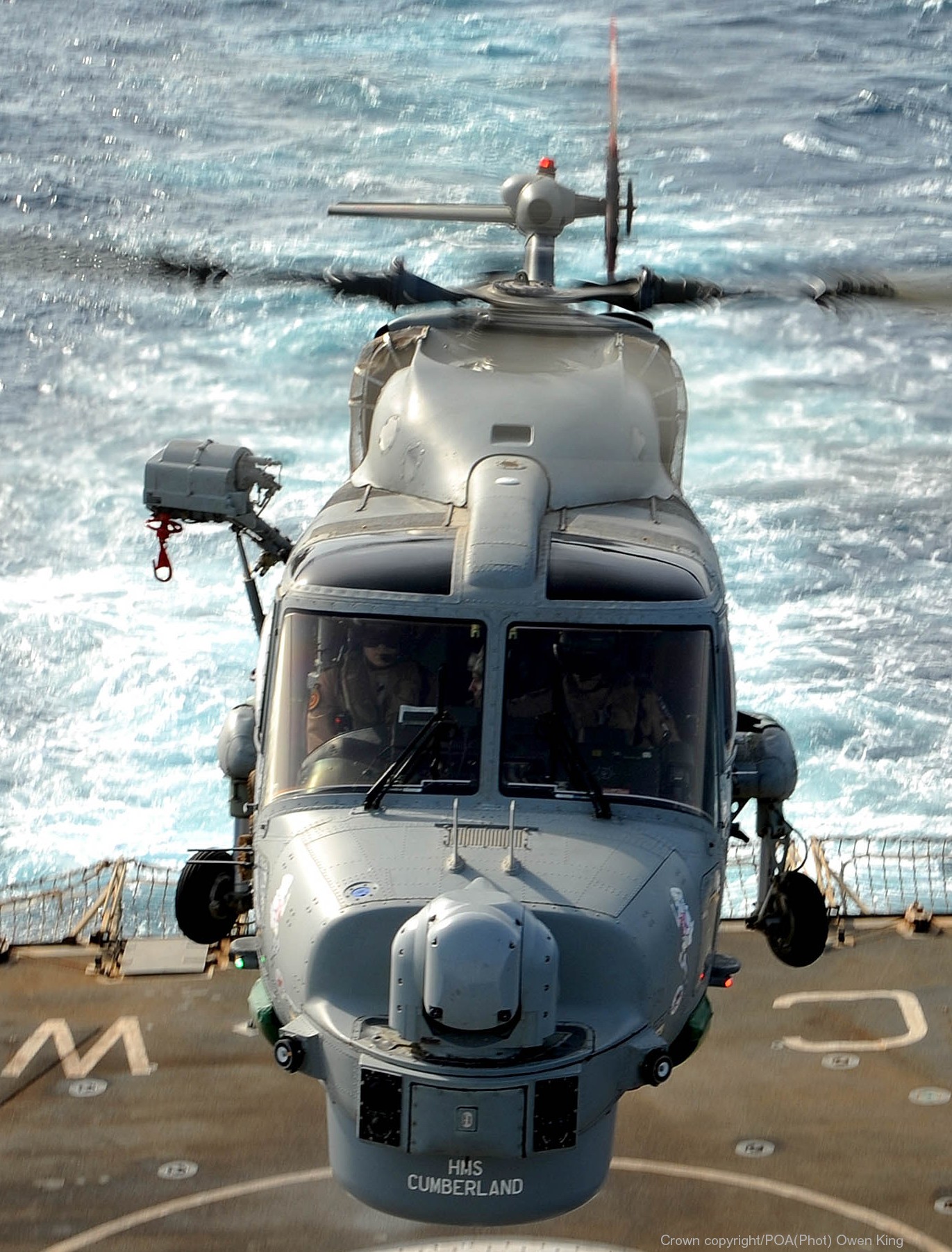 Lynx HMA.8 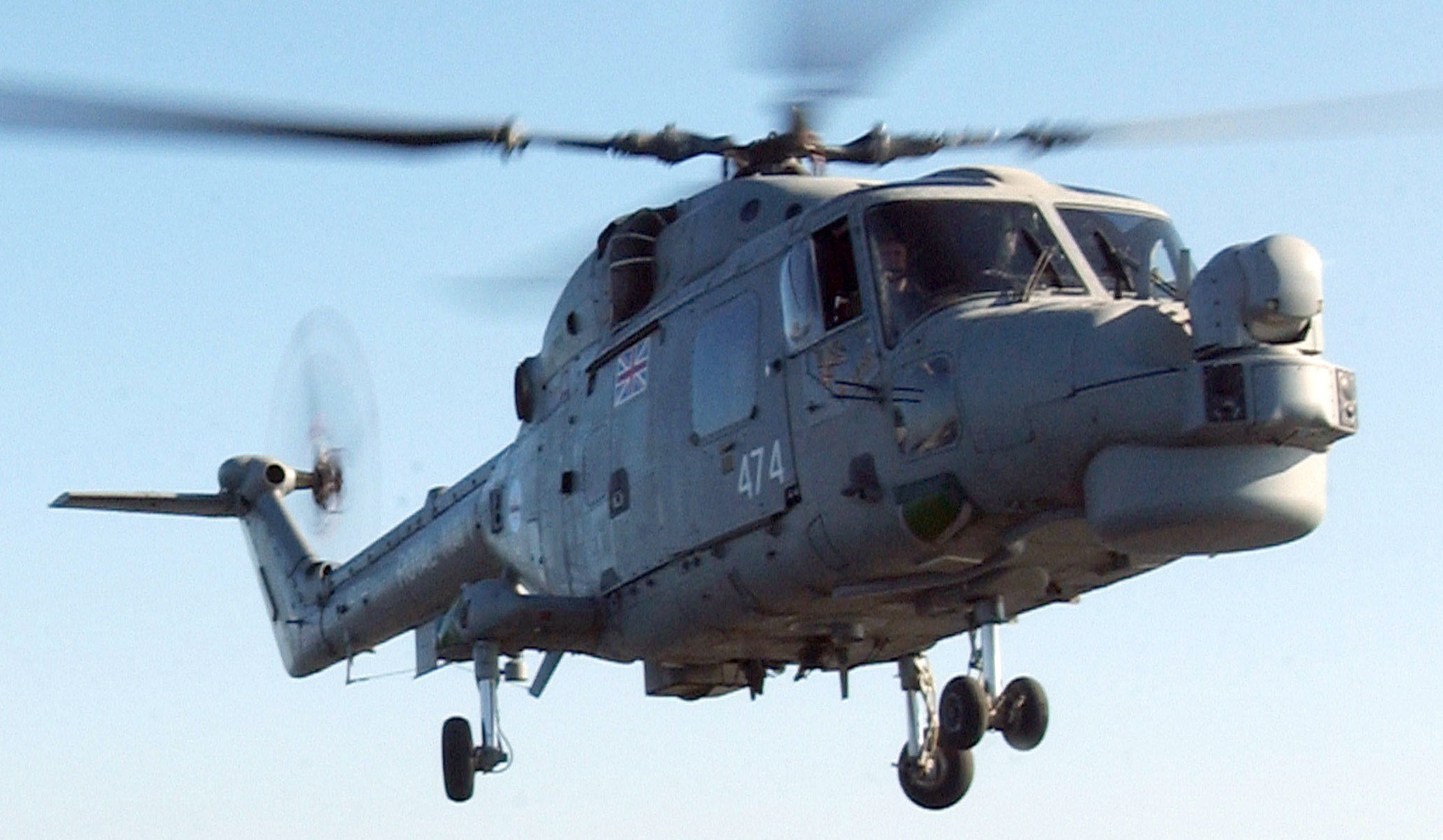 Lynx HMA.8 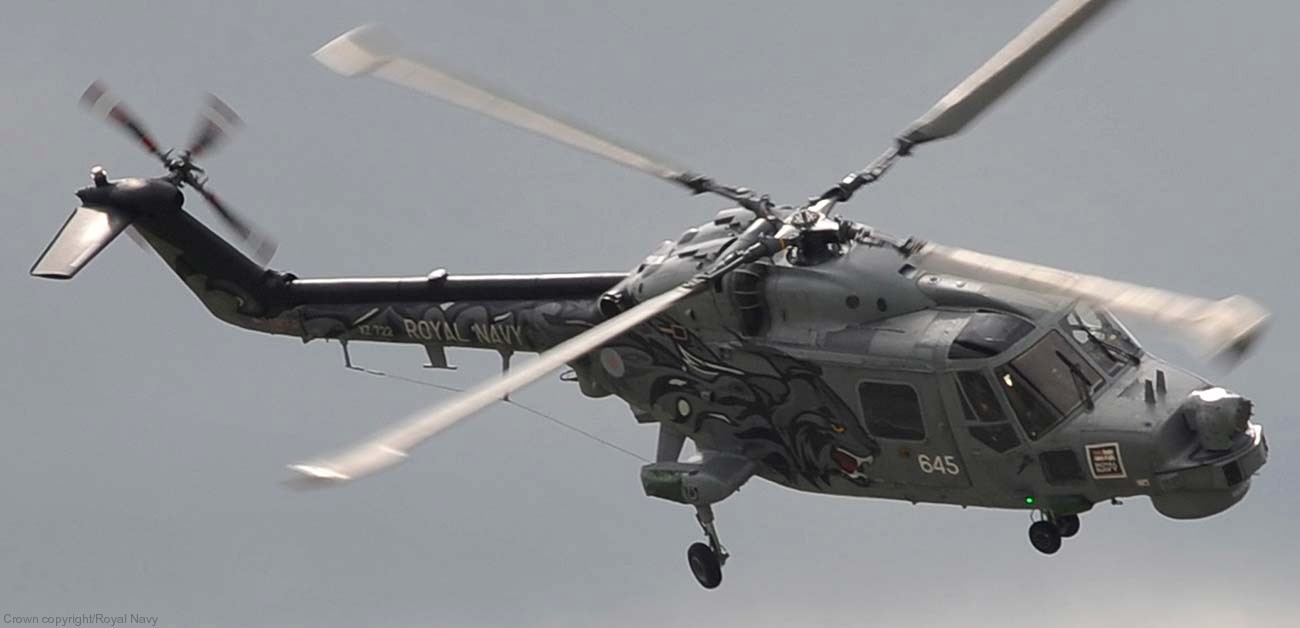 Lynx HMA.8 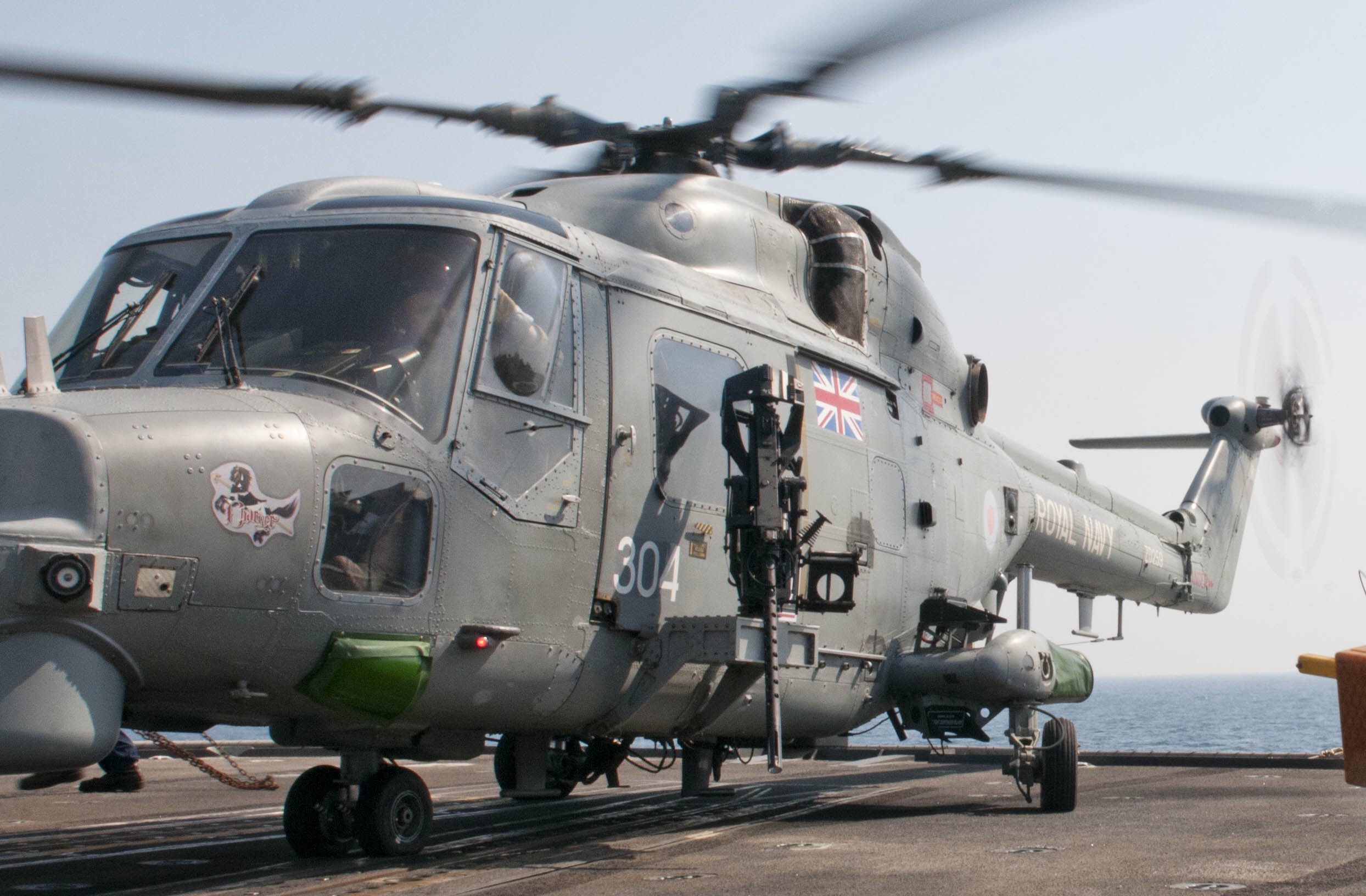 Lynx HMA.8 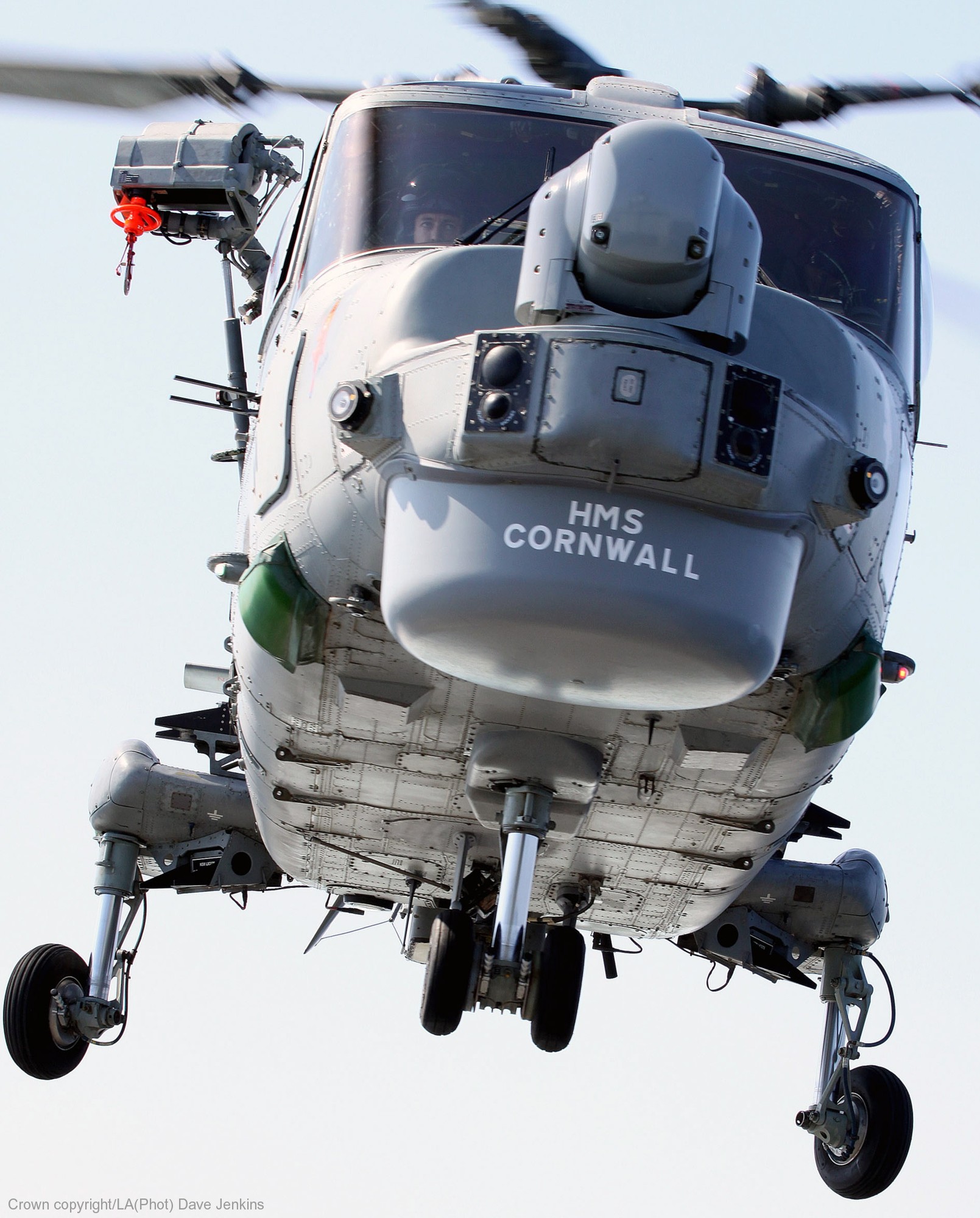 Lynx HMA.8 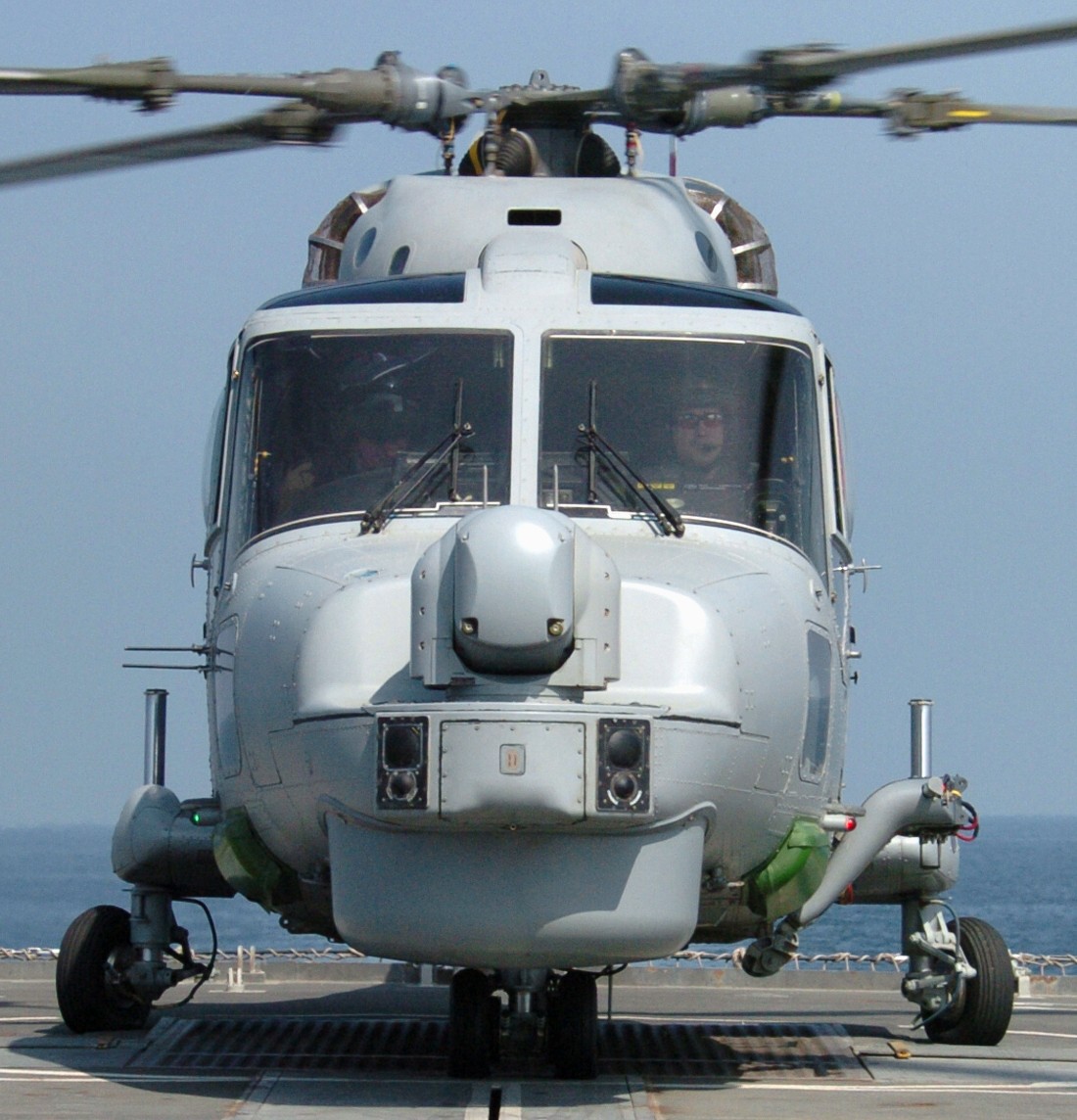 Lynx HMA.8 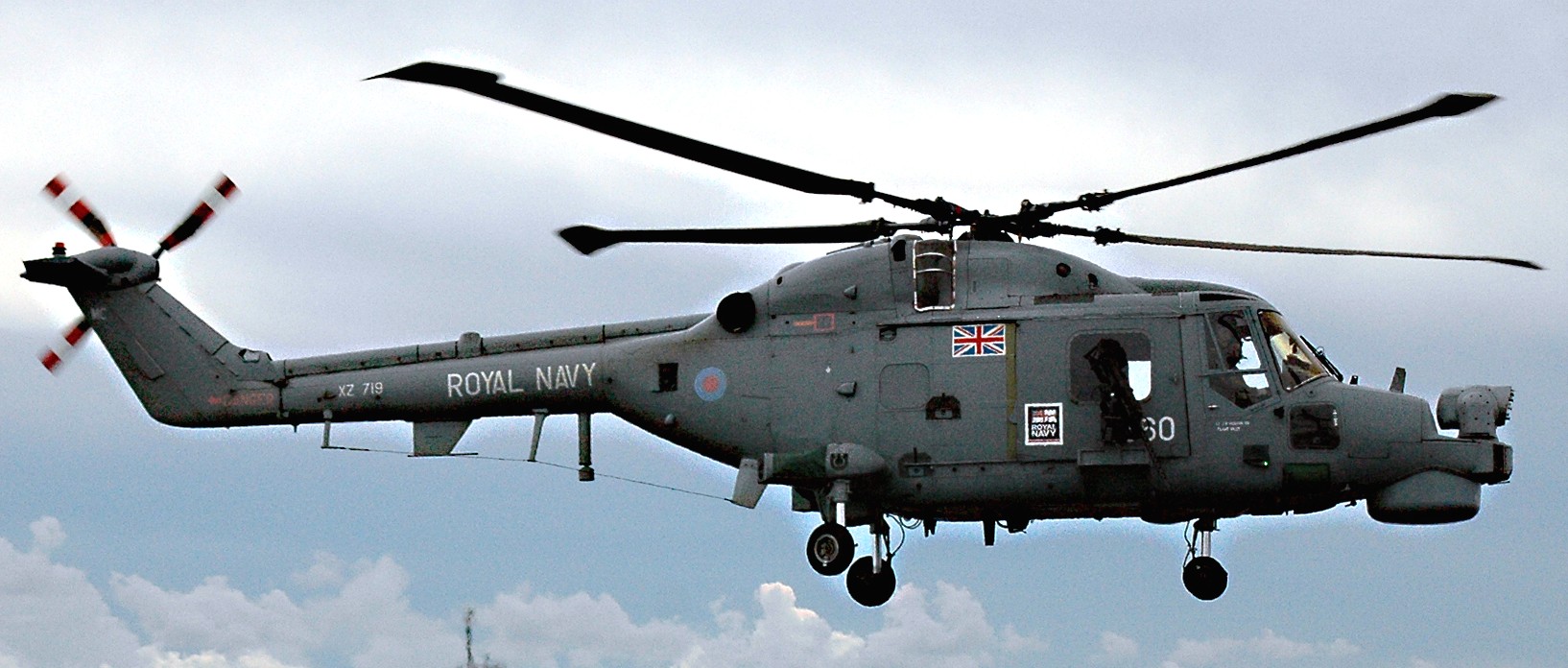 Lynx HMA.8 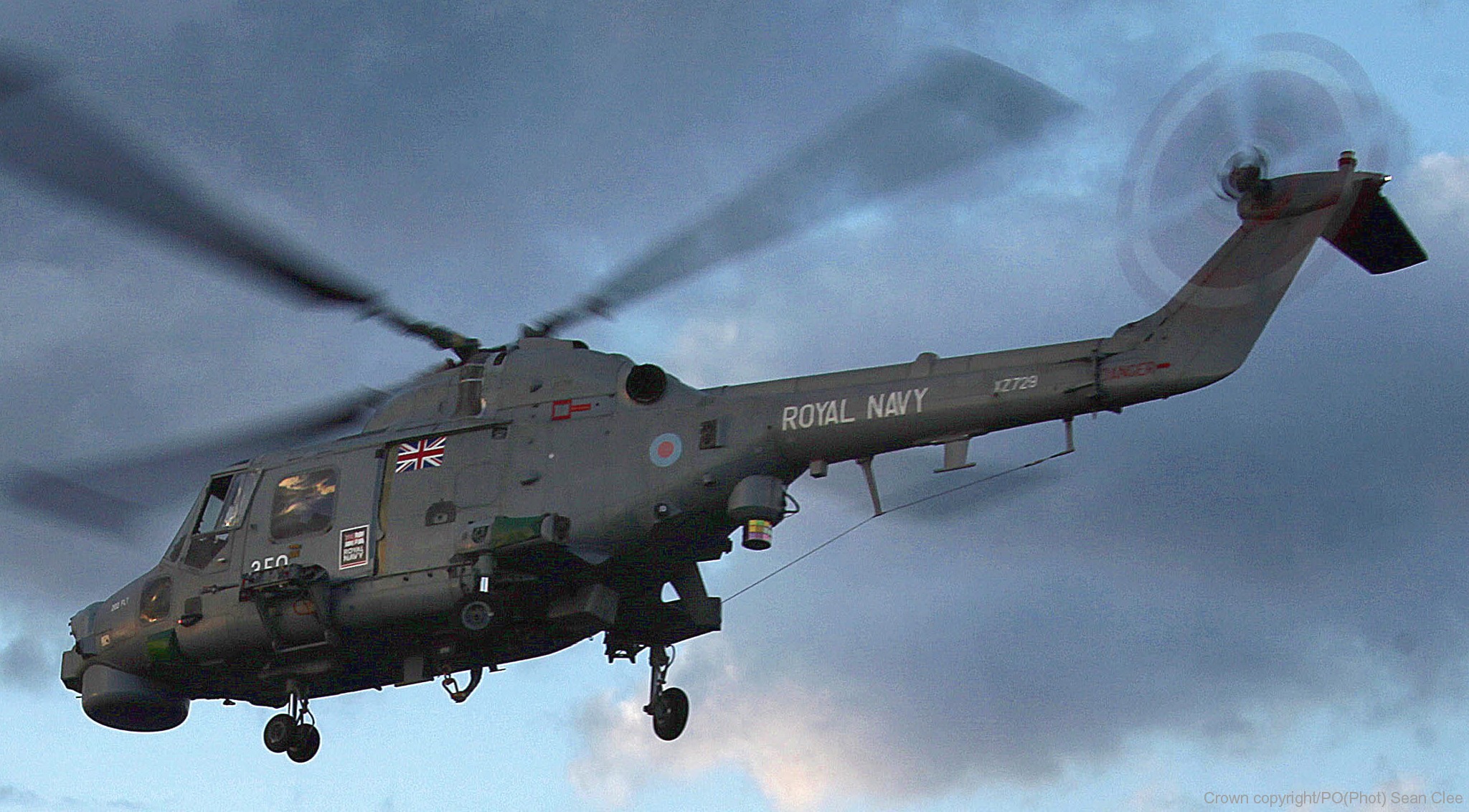 Lynx HMA.8 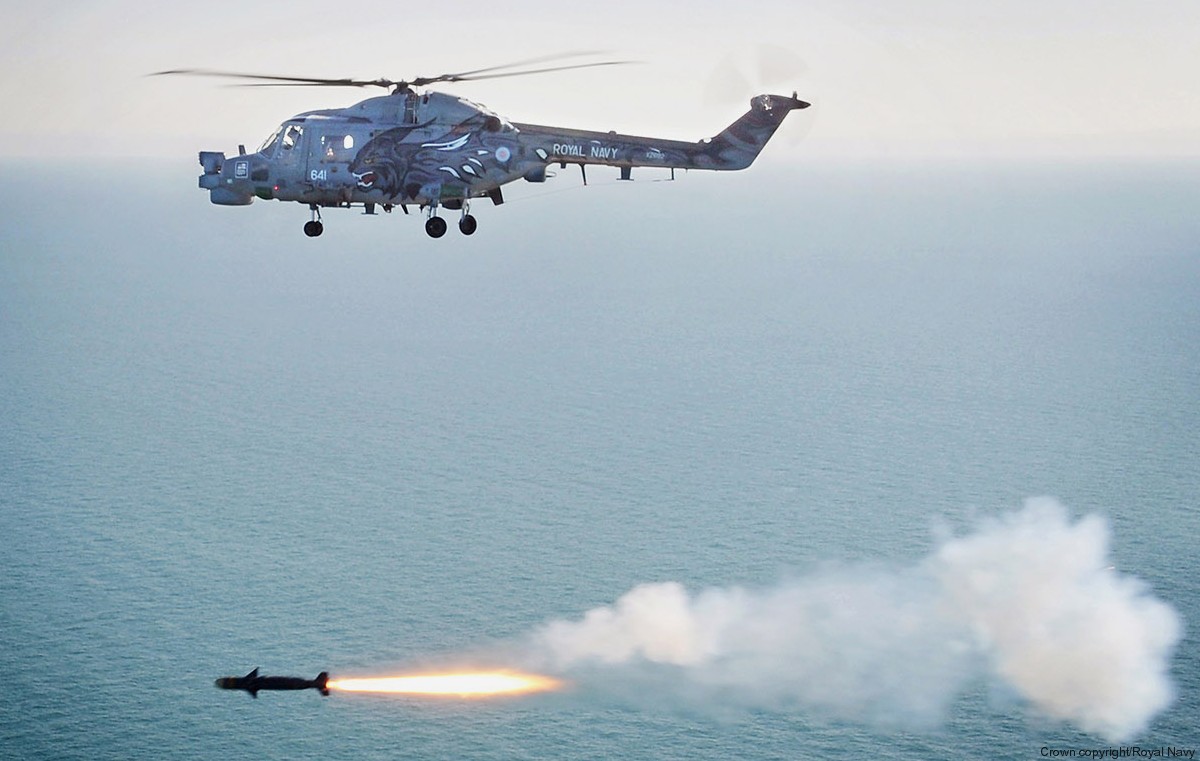 a Sea Skua missile was fired from a Lynx HMA.8 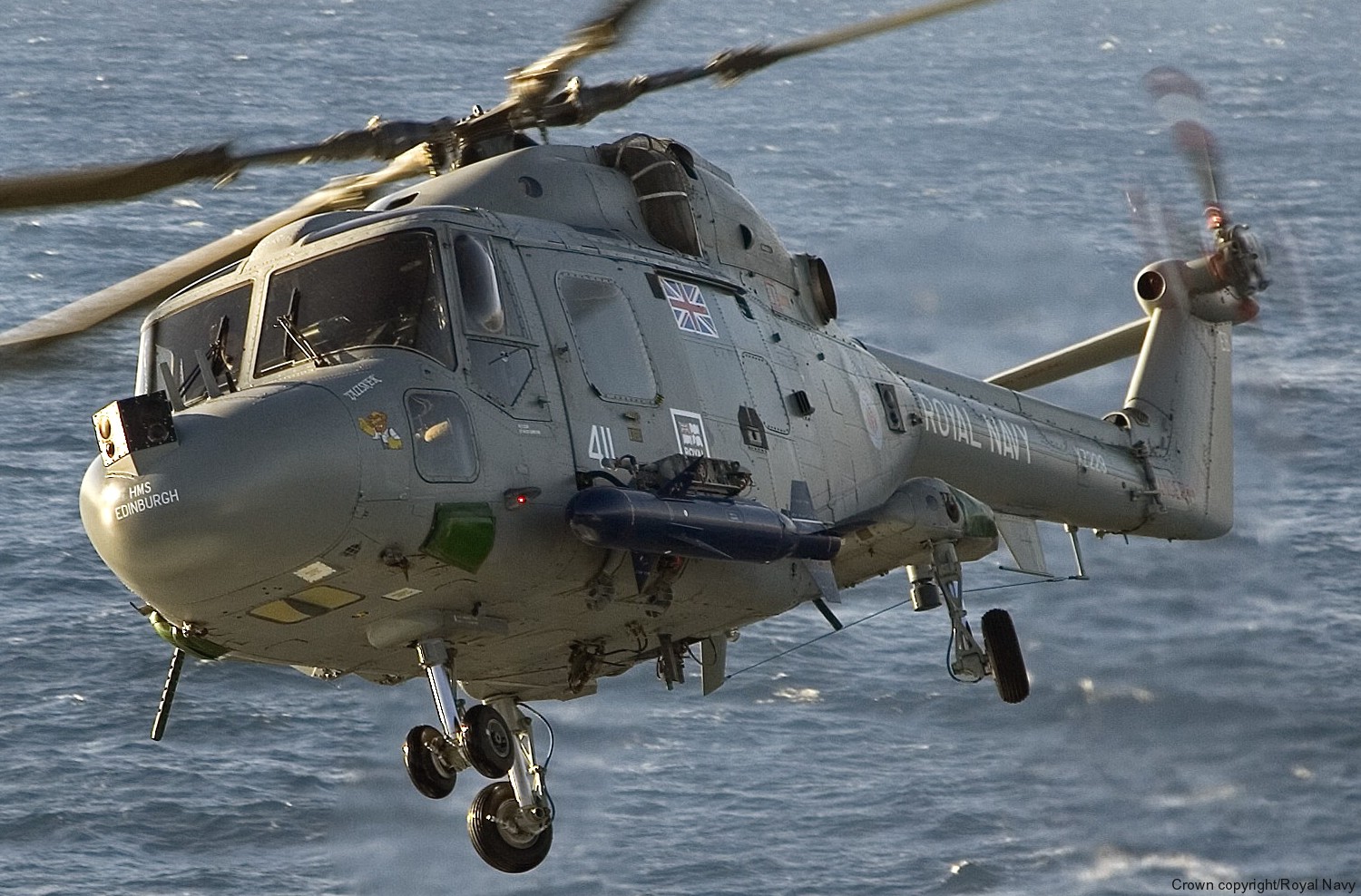 Lynx HAS.3 carrying a Sea Skua anti-ship missile 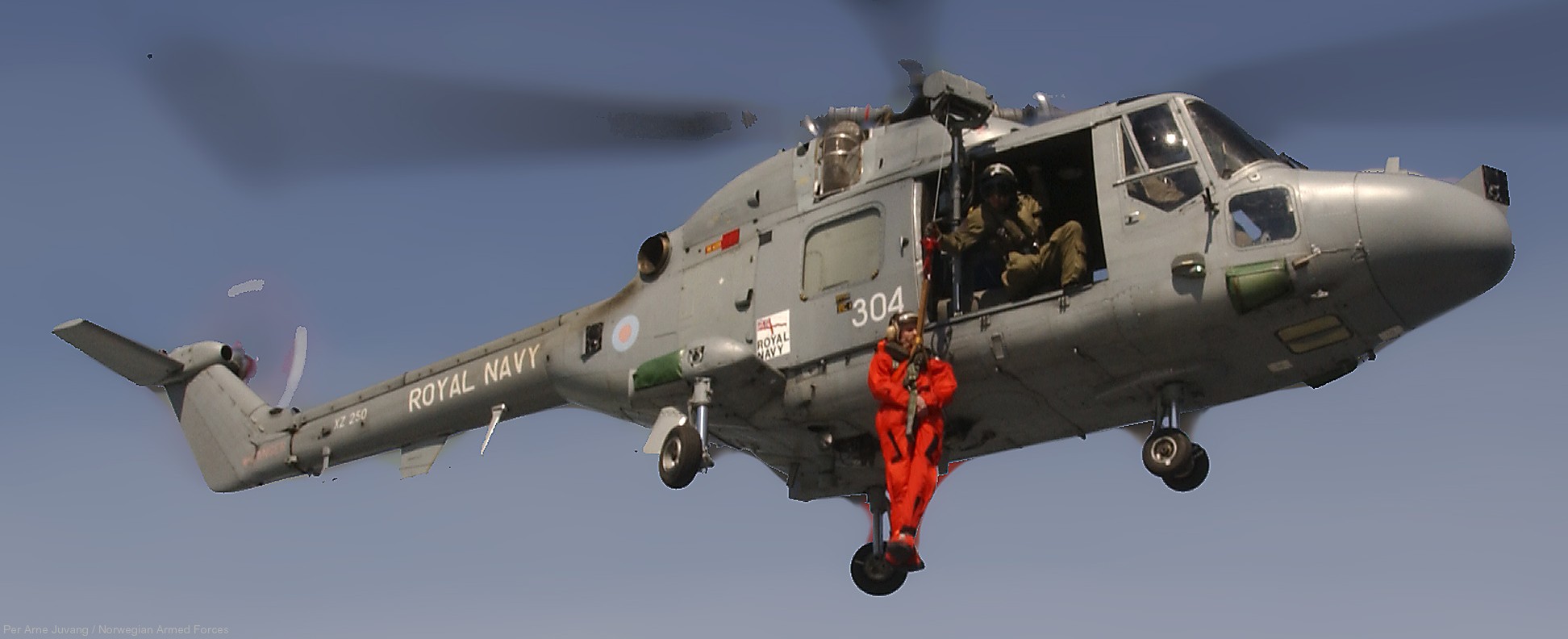 Lynx HAS.3 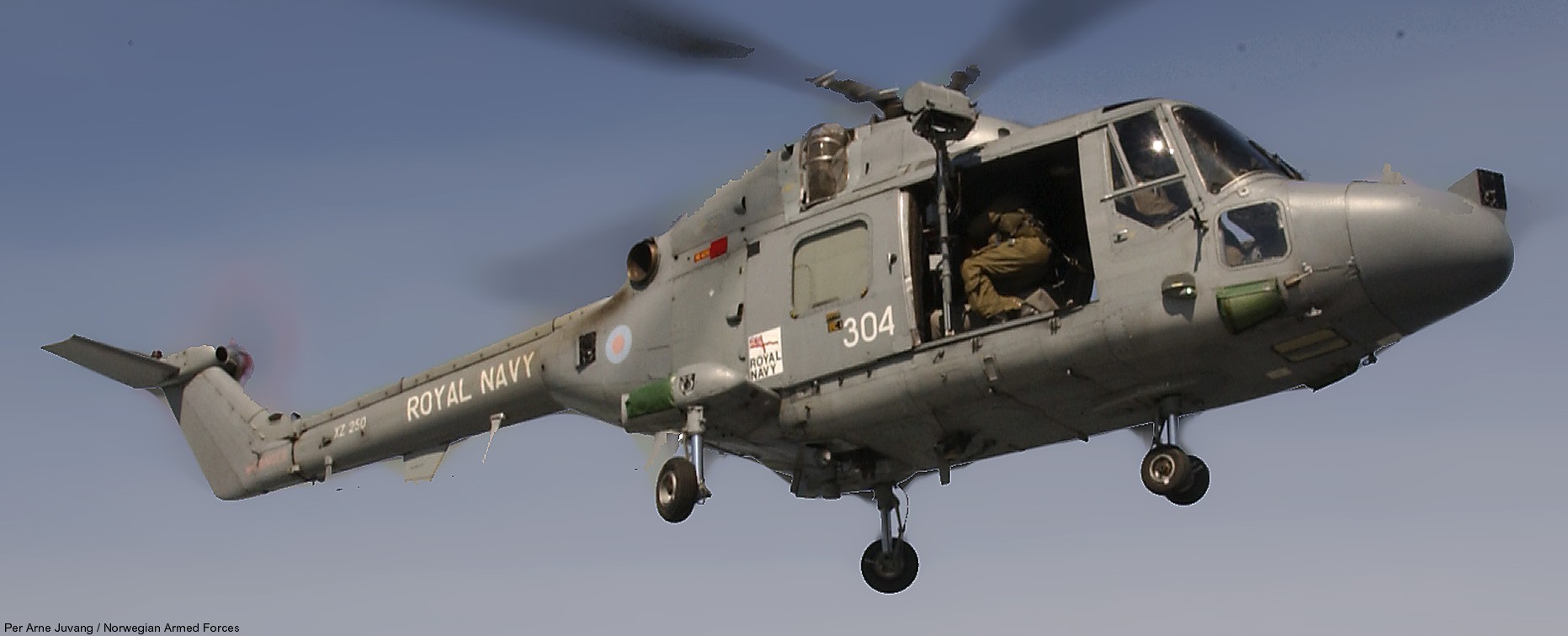 Lynx HAS.3 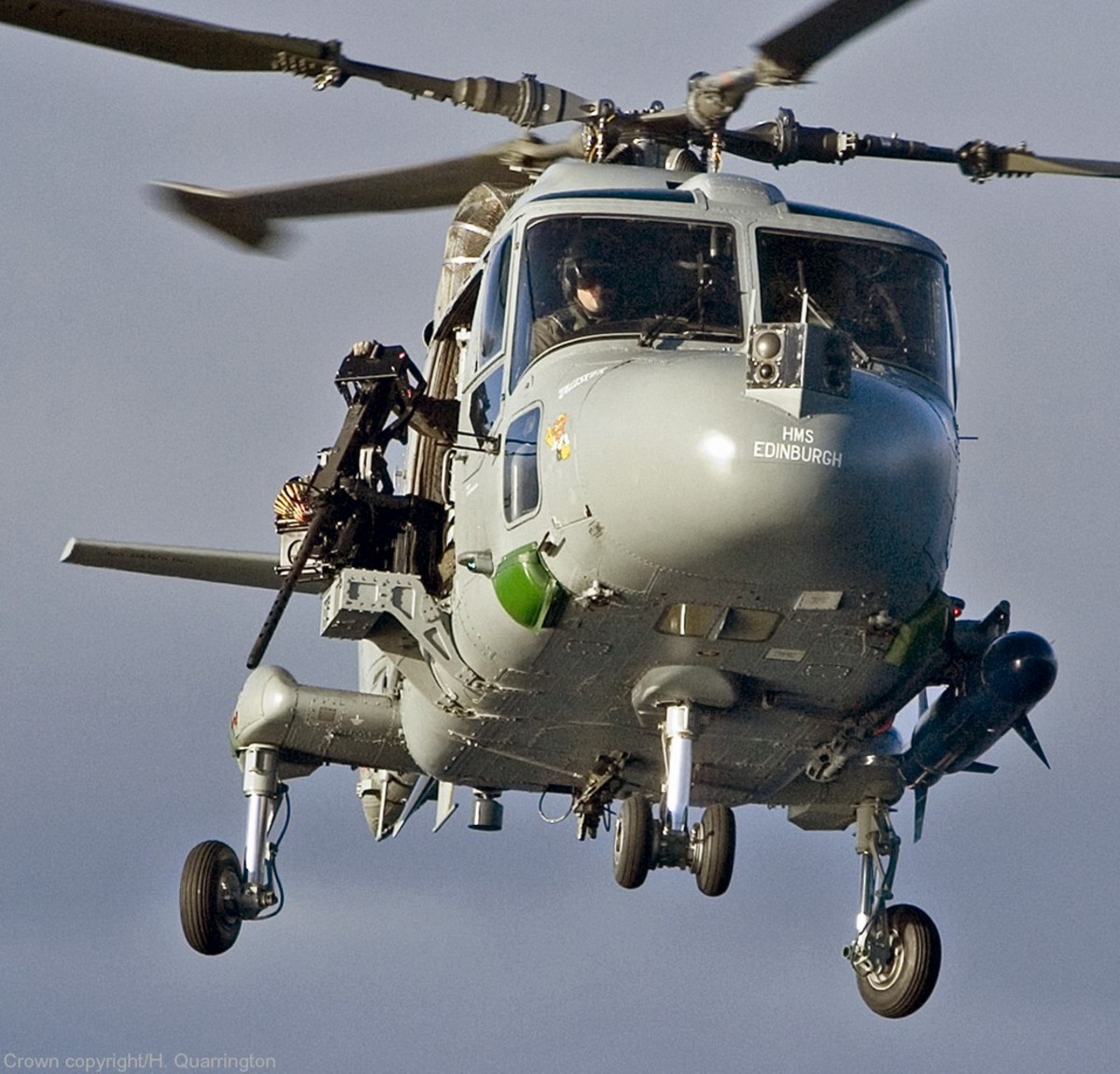 Lynx HAS.3 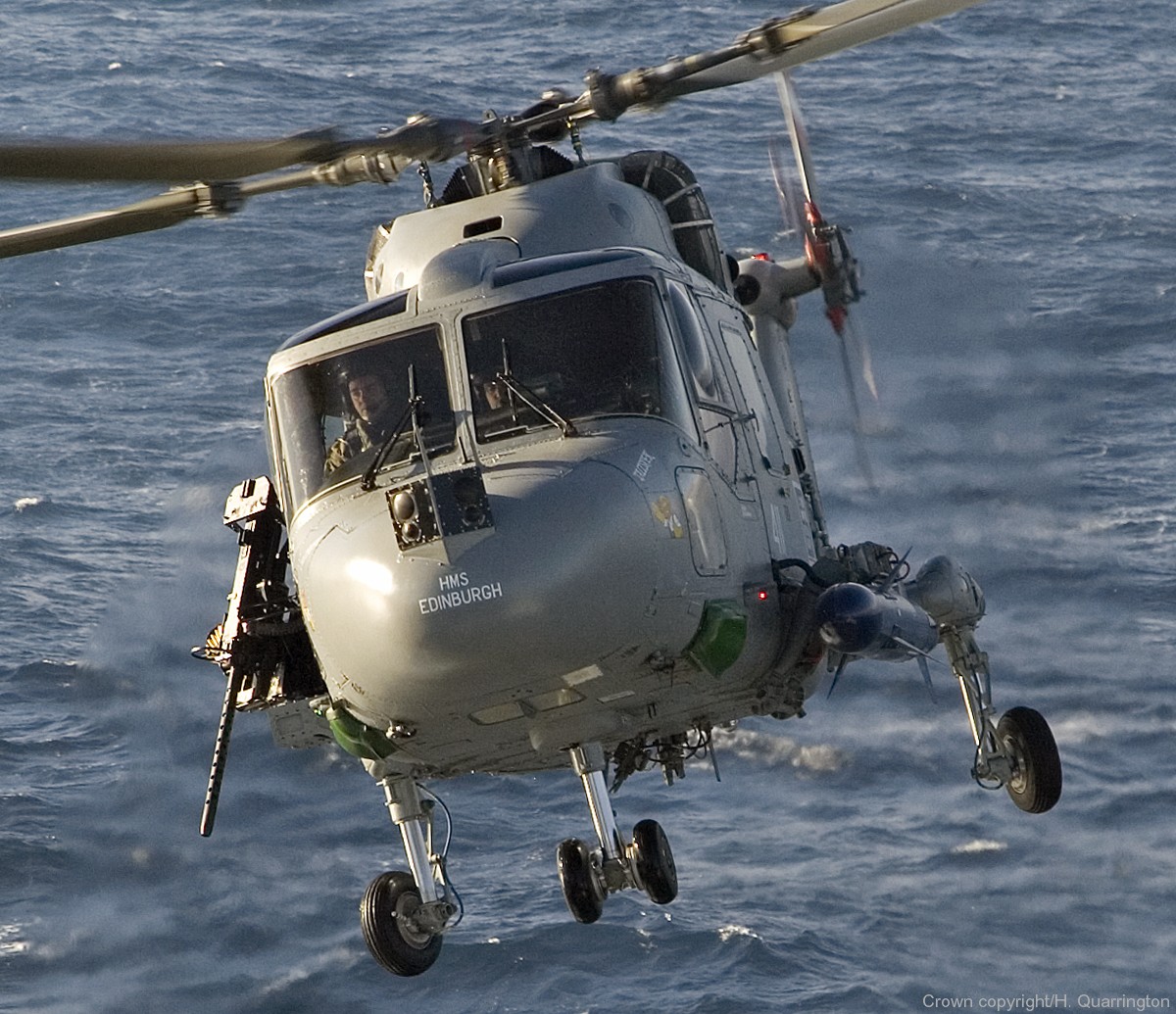 Lynx HAS.3 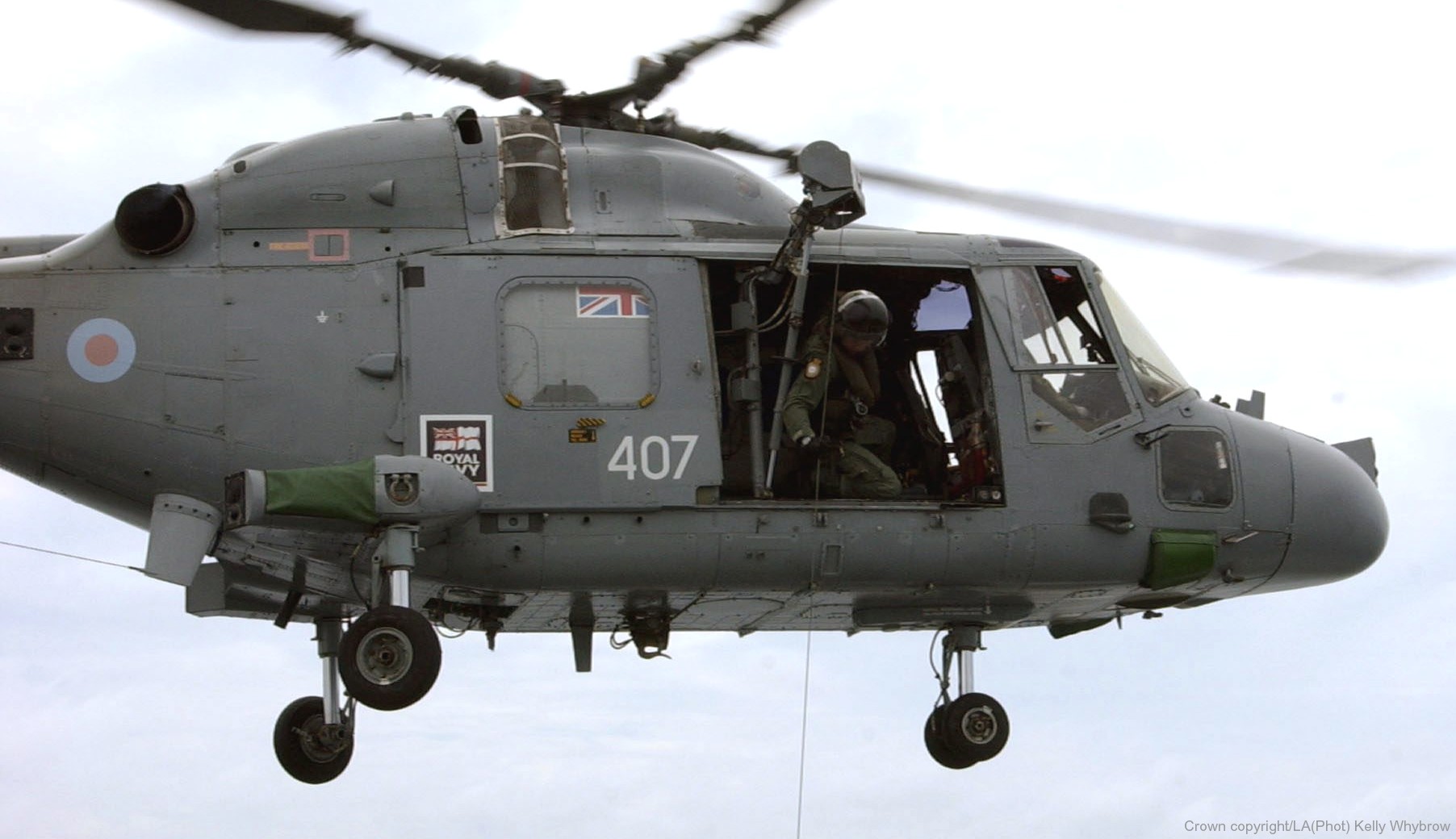 Lynx HAS.3 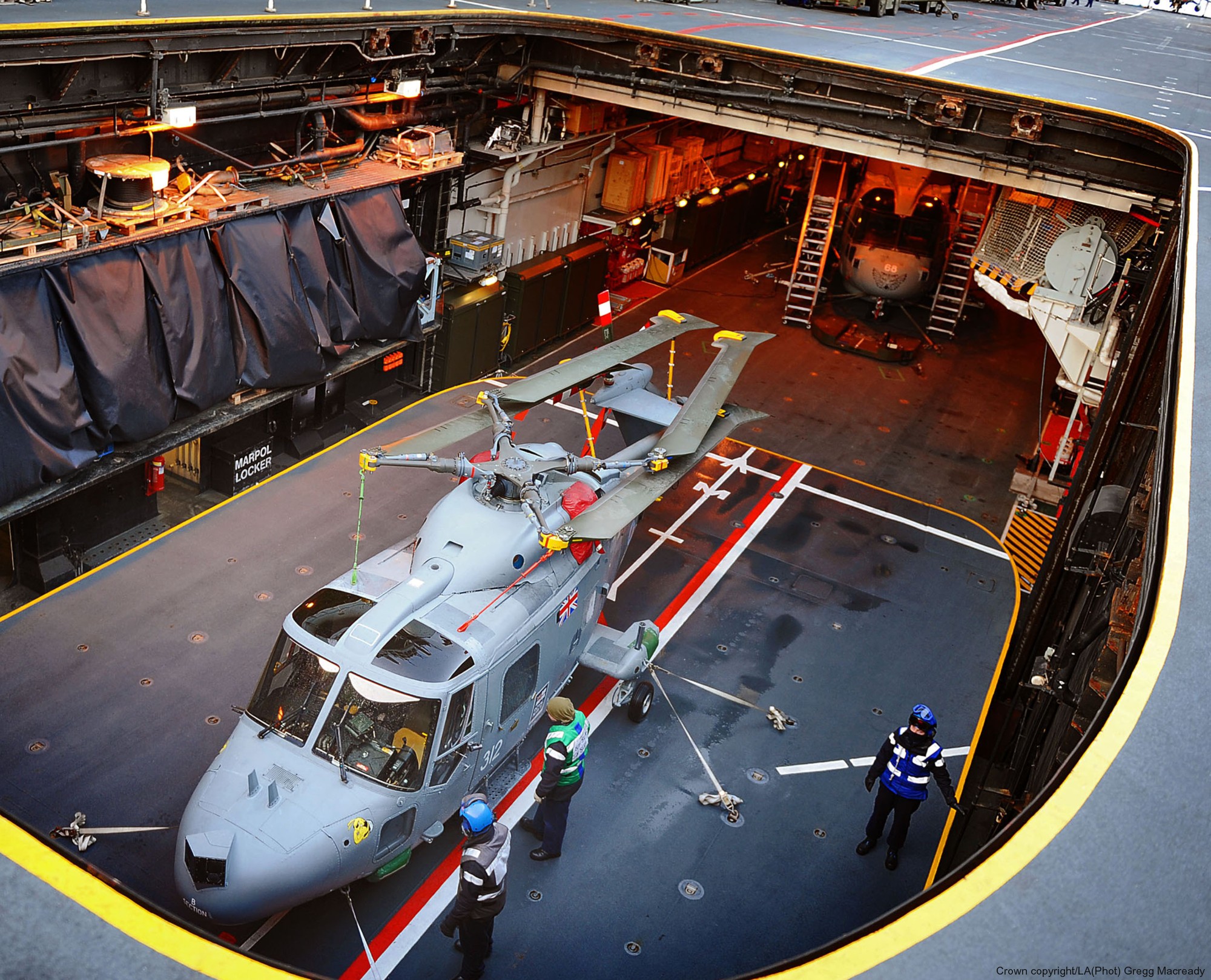 Lynx HAS.3 aboard HMS Ark Royal (R 07) 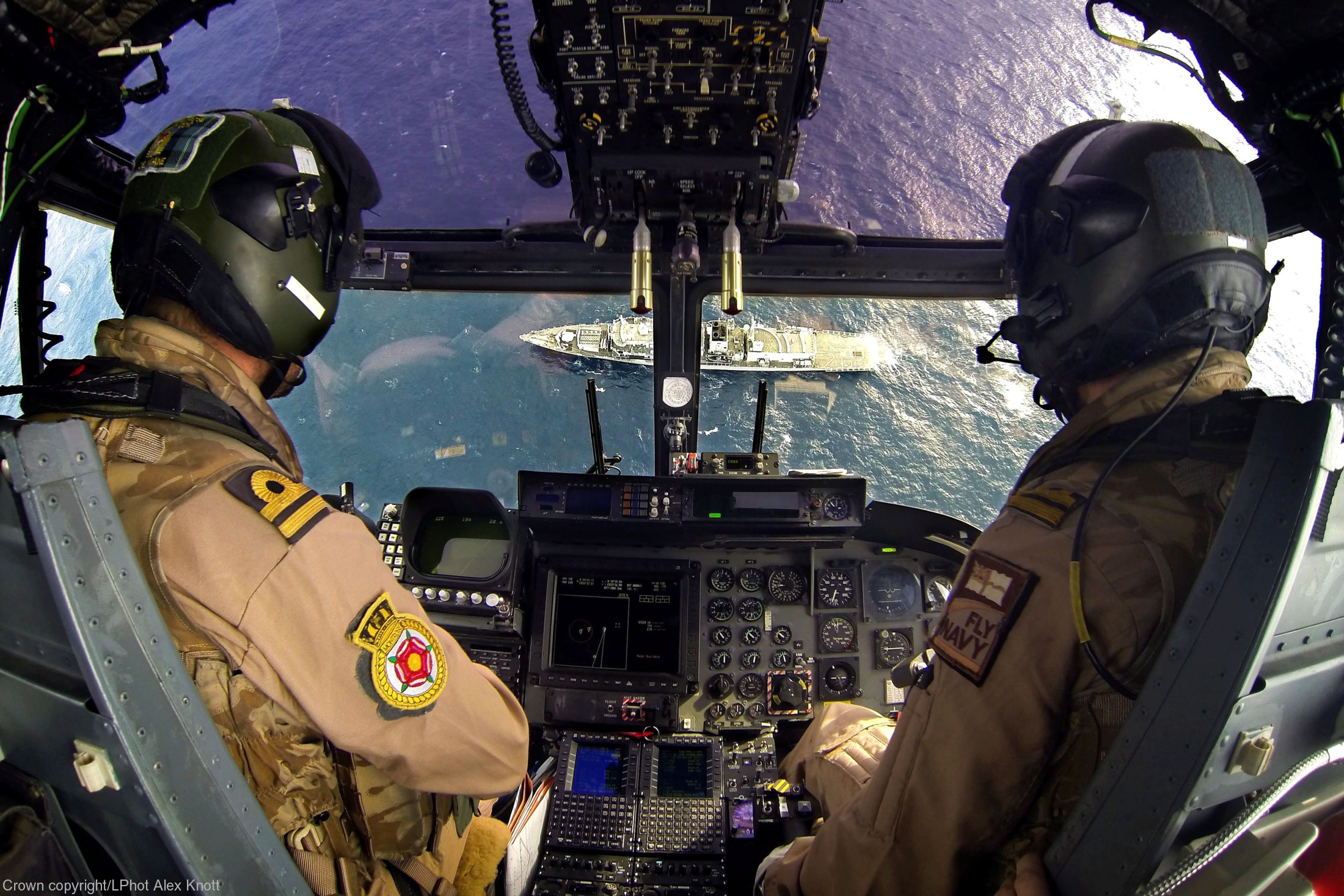 Lynx HAS.3 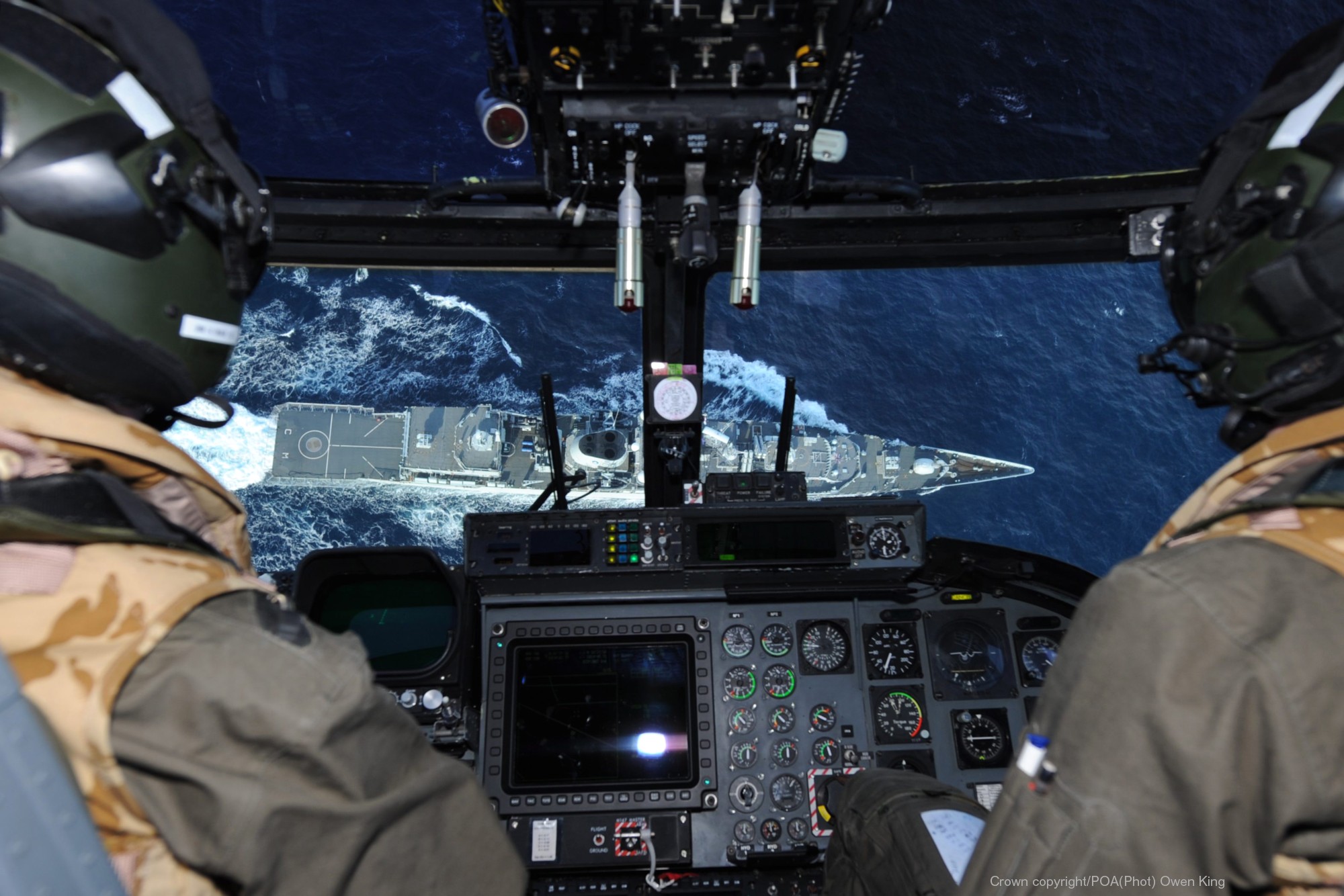 Lynx HAS.3 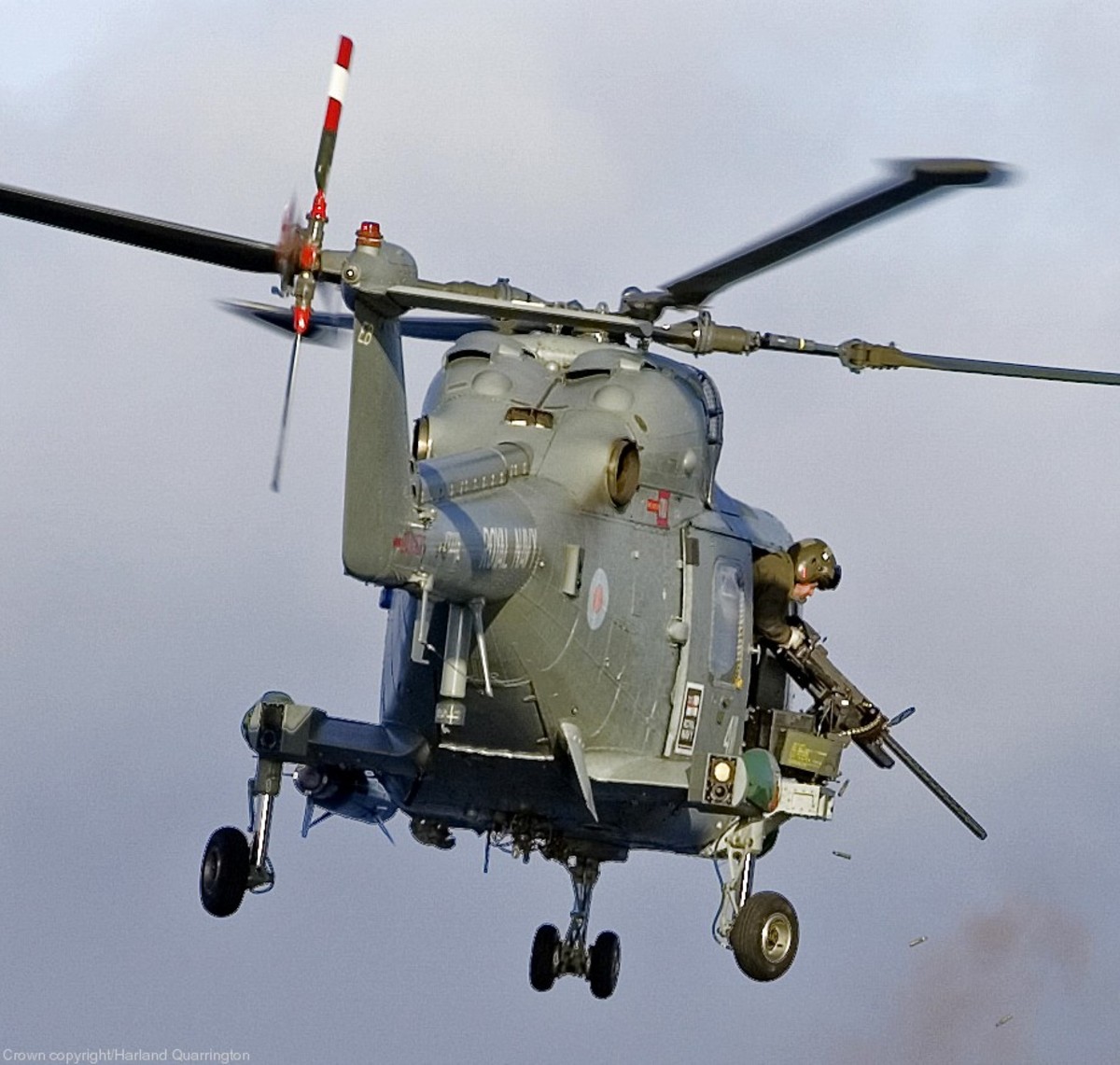 Lynx HAS.3 - caliber .50 machine gun fire exercise 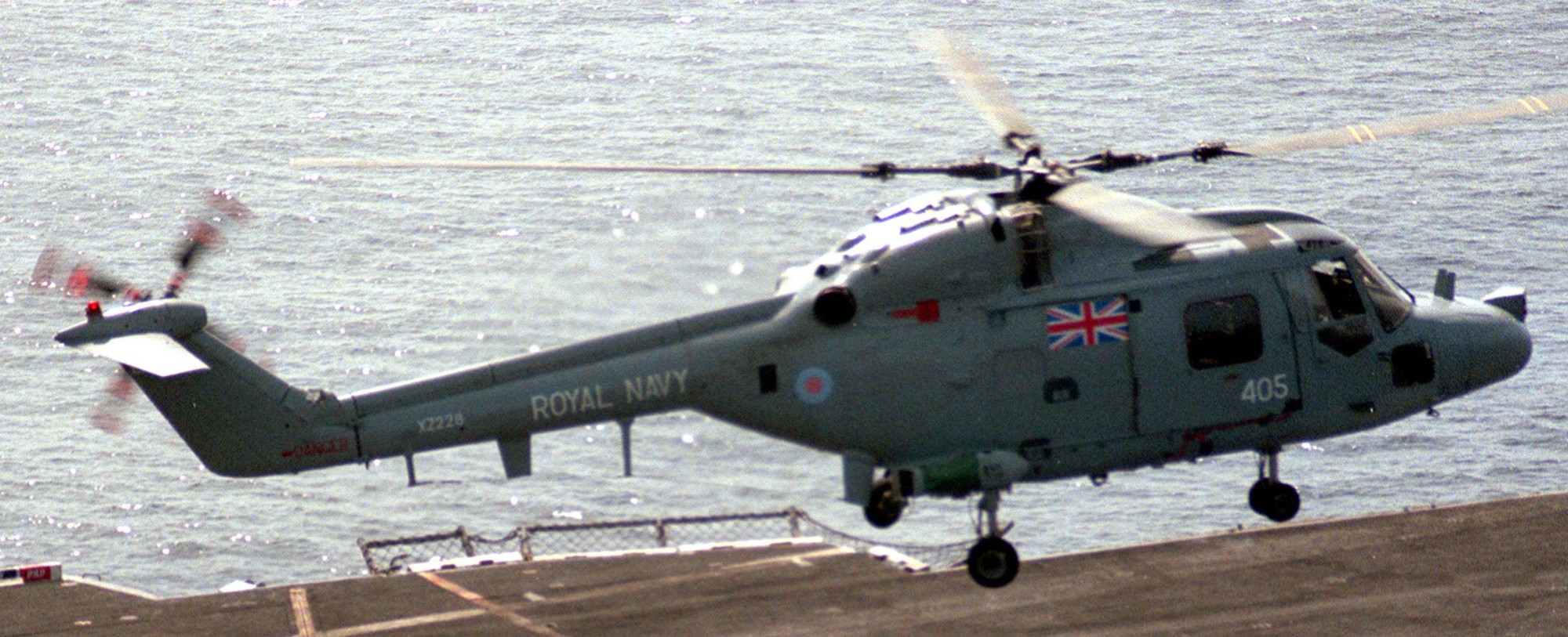 Lynx HAS.3 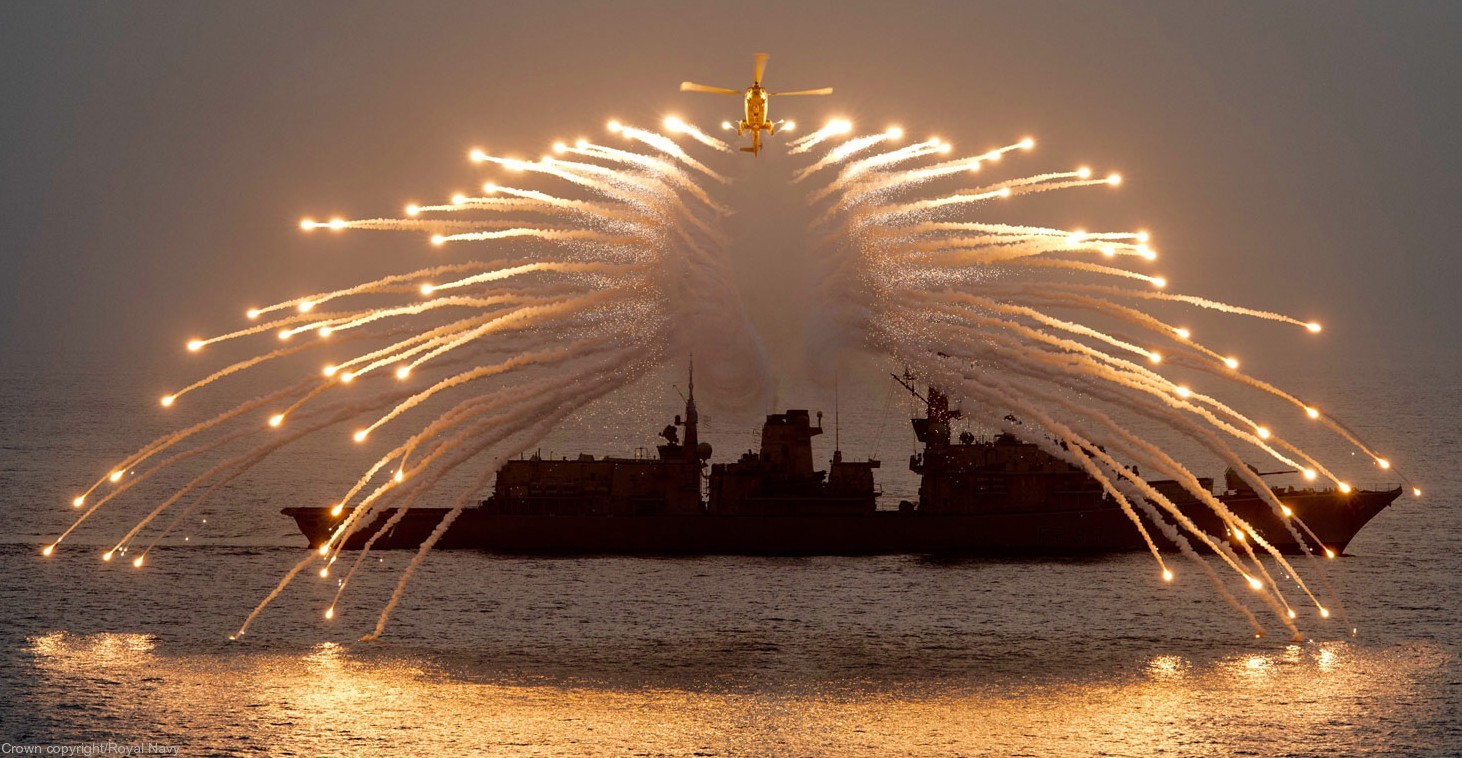 a Westland Lynx helicopter fires flares |
|
|
|
|
seaforces.org
|
Royal
Navy start page
| |